a travel blog by renata green

Grand Tour of SOUTH KOREA – A Guide for Individual First-Time Visitors
Posted on 2023-12-16 2024-01-19 Author Renata Green Leave a comment
BTS and Gangnam Style, Squid Games and Parasites – never before has South Korea been this hyped. Korean pop culture is not only on everyone’s lips, but also in everyone’s eyes and ears. Time to join the hype? Well, although everything Korean has become so incredibly popular, a first trip to Korea can be a challenge, especially for individual solo travellers who are not basically carried from place to place on a pre-organized tour. Time to scratch your travel plan? No way! In this post, I’m taking you on my first individual grand tour of Korea, the motherland of K-Pop, Kingdoms, and Kimchi. I’m by your side, supply you with much useful info, and warn you of some foolish rookie mistakes.
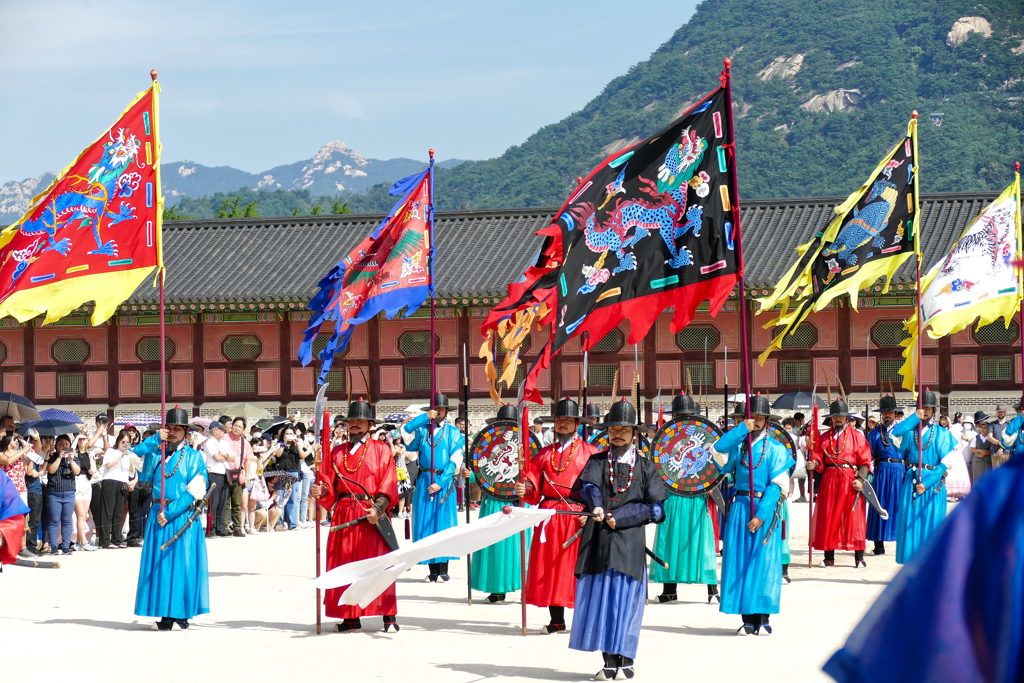
All this will make your trip to Korea easy and smooth and so much fun! Hence, 한국에 오신 것을 환영합니다 – Welcome to South Korea!
Pinnable Pictures
A quick walk through korea’s history.
In ye olden days, the three so-called empires of Korea ruled large parts of the Korean Peninsula and Manchuria until the 7th century, namely the Kingdoms of Goguryeo, Baekje, and Silla. The Kingdoms maintained close relations with their neighbors in China, Mongolia, Siberia, and Japan .

In 1392, Yi Song-Gye took over, and the Joseon Dynasty became Korea’s last and longest imperial Emperor. During the reign of the fourth King Sejong the Great, the Korean script Hangul was created in 1443.
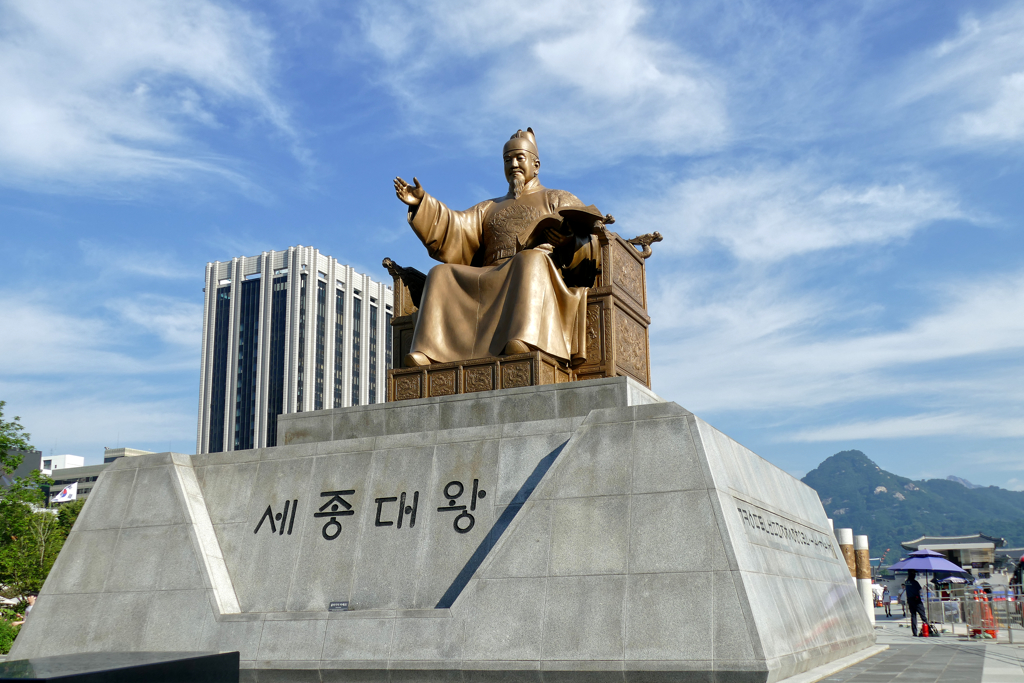
In 1905, Korea first became a protectorate of the Japanese Empire and eventually a colony in 1910. The Japanese oppressors banned the Korean language from schools and public offices in 1938. Also, in the course of their policy of cultural extermination, they excluded Korean courses from elementary education in 1941. As a matter of fact, the violence and humiliation that Korea had to endure during that period aren’t yet completely overcome to this day.
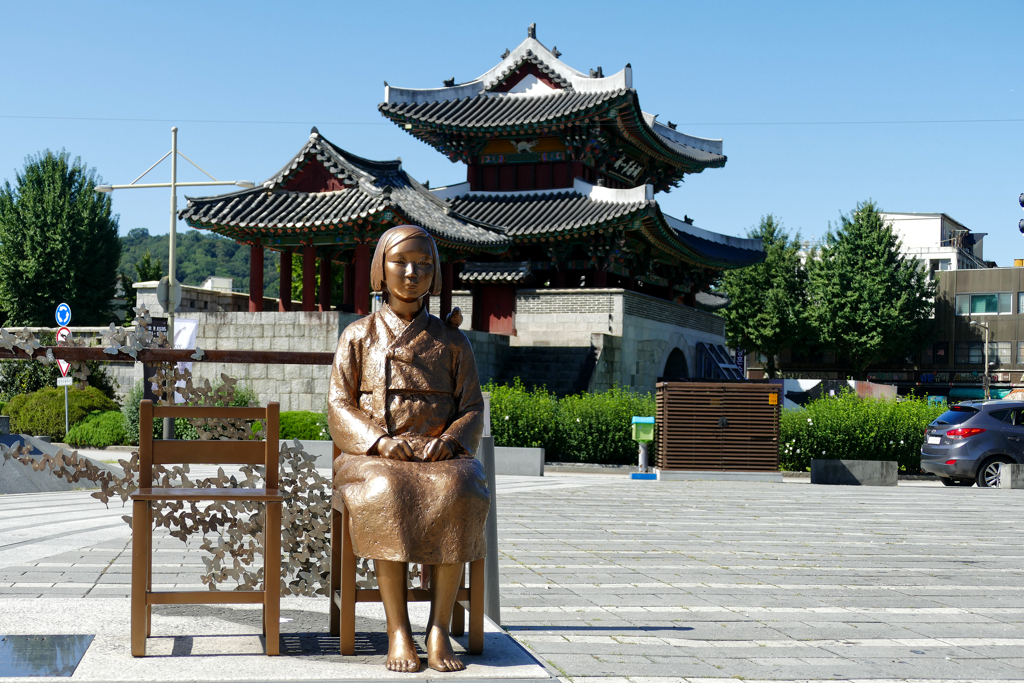
Particularly the crimes against humanity that the Japanese troops committed against the Koreans during WWII left deep scars, especially since Japan never acknowledged them to their full extent.
One People, Two Nations
After Japan’s defeat in WWII, the Allies occupied not only what is now Japan but also Korea. The two victorious powers divided the country along the 38th parallel. The former USSR took over the northern part while the USA administered the south.
In 1948, the occupying powers established independent Korean states on their territory and installed governments. The Soviet troops withdrew the same year and the US troops followed one year later. Both Korean states proclaimed sovereignty over the entire peninsula from the very beginning of their existence.
In June 1950, North Korea attempted unification by a military attack on the South. This resulted in a war in which a number of Western states took part. North Korea, on the other hand, was supported by the People’s Republic of China. After the armistice in July 1953, the division of the peninsula remained along the formerly defined demarcation line. A demilitarized zone was established around the demarcation line in accordance with the terms of the ceasefire.
Despite the heavily patrolled border between North Korea and South Korea, the people of both countries share a joint history, a mutual language, as well as cultural traditions.
After WWII, Seoul became the capital of the Republic of Korea in 1945, obviously. However, North Korea’s constitution also specified the city as its capital. Only in 1972, a constitutional amendment defined Pyongyang as the capital of North Korea.
Note: If you are a history teacher, you might find this outline somewhat simplified. It is. Since this is mainly a travel post, the historical and political info is very basic and in places not complete.
Becoming an Asian Tiger
I guess everyone who doesn’t live in a shack in the woods has heard of the Korean War and knows that it is a divided country. But did you know that right after the war, the economy of North Korea was initially significantly stronger and far more advanced while the South was one of the world’s poorest countries? However, over the decades, the tables turned dramatically. While the North is basically collapsing, South Korea has experienced a fantastical economic boom since the 1970s. Today, it is one of the world’s twenty strongest economies. Companies like Samsung, LG, Kia, and Hyundai have secured the country a permanent place on the rich table of the global economy for many years. Then, successful cultural phenomena such as K-pop, K-drama, and, last but not least, Korean cuisine have been added in recent years. Today, Korea is considered a feast for all the senses.
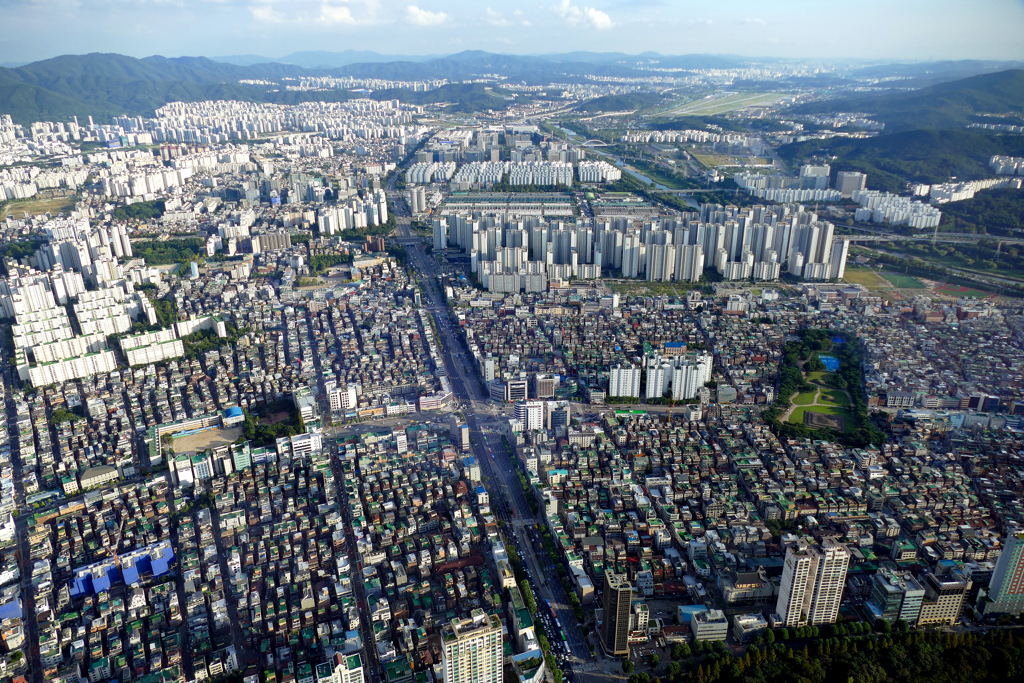
And even though I’m too old to have a crush on BTS and K-Dramas tend to get on my nerves, I thought it was definitely time to check out what this hype is all about. Hence, time to travel to Korea.
Before I shower you with tons of information and tips, let’s take a look at what legends are spun about trips to Korea, which of them are true, and how the trip went for me as a Westerner and especially as a woman traveling alone.
Before the trip, I had of course done a bit of research into what to expect and how I should behave. I had been to Japan some time ago, and somehow I assumed that since Korea had developed economically in line with Japan, things might be similar in other areas too. And while some common courtesies such as taking off your shoes, keeping your voice down – especially not on public transport, and not blowing your nose loudly apply in both countries, Koreans tend to be more relaxed and not very strict. Young people are tattooed and pierced without being mistaken for mafia members. Korean cities are far from being dirty, but they aren’t that squeaky clean. Overall, the vibe in Korea is not as aseptic as in Japan.
Law of the Urban Jungle
Koreans are nowhere near as reserved as Japanese. They may not shout around in the subway, but it is absolutely not taboo to chat and talk on the phone. There are areas marked at the train stations that should remain free for letting passengers off the subway, and people stick to that. However, once they are on the train, all hell breaks loose. Yes, it is true that the marked disabled places are kept free for the elderly. Nevertheless, for all other seats, it’s the survival of the fittest. I’ve seen young girls quickly beeline their way past three grandmas to get the only available seat before them. Yes, the seat wasn’t designated for the old and weak, but still – how is that respectful?
By the way, there are also special seats for pregnant women on the trains. Interestingly, these are generally respected by non-pregnant women. But you wouldn’t believe how many pregnant men I’ve seen sitting there.
Yes, men in Korea take up a lot of space. It’s a man’s man’s man’s world. I didn’t just learn this from Korean YouTubers and Korean authors, I saw it with my own eyes.
It’s a Man’s World
And that brings us to the topic of female solo travel. Currently, Korea is taking measures to attract international visitors to the country. That’s why, for example, the K-ETA is currently suspended for citizens of 22 countries. That’s great, but foreign visitors are still far from being embraced by all Koreans. Westerners are aliens in Korea and are often viewed with skepticism. Mind you, Korea is a rather homogenous society with a rate of 3 percent foreigners of whom almost 50 percent are Chinese.
Nevertheless, in general, Koreans are friendly and helpful.
Yet, in Korea’s patriarchal society, a single woman is inherently strange, if not suspicious. After all, in Korea, the greatest good is to marry well and then give birth to a son as quickly as possible. In a country where the wife has to cook for and look after the entire family at her in-laws’ house on certain holidays, a woman travelling cross-country alone is an alien. How much Korean society is focused on men is shown, for example, by the fact that hotel saunas are only for men. Although I paid the same price, I was excluded from certain services based on gender. I know of several countries where the equal opportunities officer would investigate.

The sense of immense inequality is not just based on my gut feeling or humble experience: With 31 percent, Korea has the highest gender pay gap in the entire world!
Couples Only
As I said, Korea is a couple-oriented society. And that makes travelling solo more difficult. I have been refused service several times in restaurants with the argument that they only serve two or more people. While I can accept this at Korean barbecues, I still don’t understand why I was denied a fish platter in Andong . Even certain attractions are designed for couples or families only.
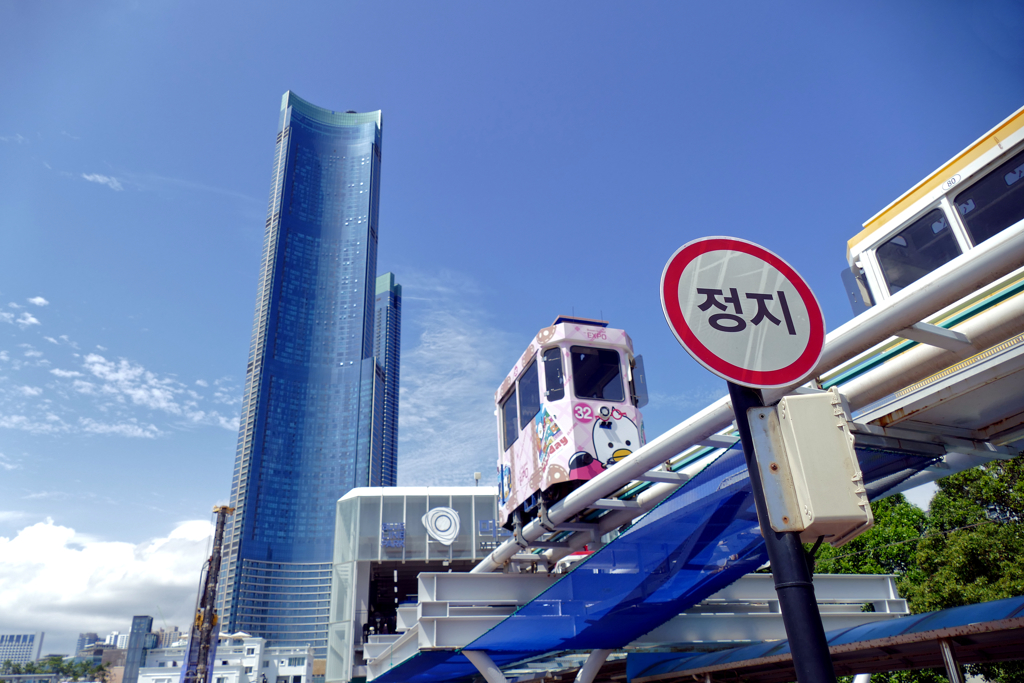
While this was at times frustrating and saddening, Korea has huge advantages for solo travellers: The country is incredibly safe. You can actually leave your luggage unattended for a moment to quickly grab a snack from the convenience store or go to the bathroom. You can walk back to your hotel after dark. Its safety makes traveling through Korea super pleasant.

With my comments, I don’t want to throw dirt on the country and its people, but give solo travellers a realistic picture of what to expect.
However, to get an insight into Korean life, I recommend the books Kim Jiyoung, Born 1982 by Cho Nam-Joo, and The Vegetarian by Han Kang. Literature can be incredibly eye-opening in a country where you cannot communicate with the locals due to language barriers, but also cultural impediments. And no, those K-dramas might be entertaining and fuel your wanderlust, but they won’t give you a realistic perspective.
Lost In Translation
This brings me to the last point: The language barrier. Just as Japanese people only speak Japanese, Koreans only speak Korean. I’ve heard several times that this only applies to old people, that young people at least understand English. In my experience, this is not true, not even in Seoul or Busan . While old people don’t know English at all, young people know words. Single words. You can’t approach them with complex sentences. And I’m talking about young baristas in hip cafes. We communicated in one-word sentences.
Yes, I’m a savvy traveller and an avid travel blogger. And yet, before each and every trip, I’m a wreck. There are a million of what-ifs in my head and none of them has a happy outcome. And believe me, the prospect of going to a country where not only I cannot speak the language but I’m even not able to decipher a stop sign doesn’t make it better.
This being said, don’t be afraid of getting lost and never finding your way home. There is a reason why I wrote the post How to Surpass Pre-Travel Anxiety . I hope it calms your nerves and raises your spirits. Yet, I think I wrote it mainly for me, to calm my nerves, to raise my spirit.
Writing on the Wall
Considering the fact that people don’t speak English, it’s amazing how many signs are written in Roman script and English in addition to Hangul. In some subways and buses, the stops are even announced in English. So while you will unfortunately have to forego conversations with locals as much as possible, you will still get along without any problems. Take it from me!
With a tiny bit of an adventurous spirit, a couple of helpful apps, and a big, big love for travel, South Korea is one of the countries that are easiest to travel – even as a female soloist.
Practical Information
How to get there.
South Korea is on a peninsula and borders on North Korea, obviously. The northern territory then borders on China and in the extreme northeast on Russia. Due to this peculiar layout, there are basically only two ways to enter the country: Either you fly in or you come via Japan by ferry.
There are 15 international airports in South Korea. Nevertheless, the vast majority of Western visitors land at the Incheon Airport about 55 kilometers west of Seoul .

After arrival, immigration is normally a piece of cake. Until the end of 2024, citizens of 22 countries don’t even need a K-ETA anymore. You can get all the information on touristy visits on K-ETA’s website .
Public transportation all over Korea is absolutely great, hence, you’ll find reasonably priced airport shuttles everywhere. I’m introducing the best connections in my post on the individual cities I visited. Either way, I’d argue that there is no need to take a cab whatsoever.
Due to Korea’s location and the country’s very peculiar political situation, the only alternative to entering Korea other than by plane is by ferry from Japan . During the pandemic, the ferry service was suspended, but is now running again.

Ferries are going from Busan to Fukuoka as well as to Osaka .
How to Get Around
Korean rail is mainly operated by government-owned corporation Korail. The fastest options are the bullet trains KTX as well as ITX.
You can buy tickets at the railway station from vending machines as well as real people and supposedly on the internet. Nevertheless, some fellow travellers told me that they couldn’t pay with their international credit cards. I don’t know since I always bought my tickets before departure at the station.
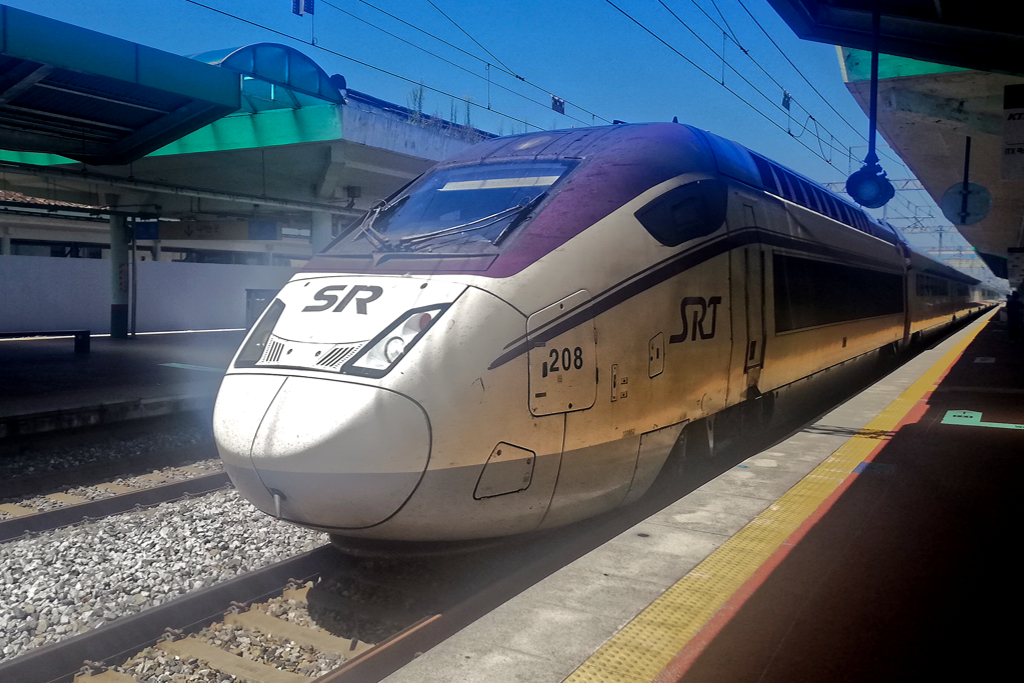
Obviously, train tickets cost just a fraction of airfare while trains like the KTX or SRT take you to some destinations in the same amount of time.
For the sake of completeness, it should be mentioned here that tourists can also obtain the KORAIL Pass . However, I cannot even imagine how much time you have to spend on those trains to get your money’s worth out of them. The cheapest pass costs KR₩ 121,000 for two consecutive days. In comparison, I paid KR₩ 21,000 for a KTX ticket all the way from Andong to Seoul .

Yes, the good news is that KTX tickets can be quite cheap. The bad news is that it can happen that all seats are sold out. Does this mean you have to stand for hours? Well, if you play it smart, you don’t.
Get Up, Stand Up – How to Survive a Standing Ticket on a KTX Train
So, what do you have to do to secure a seat?
First of all, boarded the train as early as possible. If your station is the railhead, be there about twenty minutes before the departure. In between the train carriages where the doors are, there are foldable seats that early birds can quickly grab and never let go.
You can also sit in one of the seats that remain vacant for some time as the passengers may only board the train at the following stations. However, you’ll have to give those seats up as the rightful seat owner boards the train.
Obviously, the standard seats are much more comfortable than the folding ones. However, there is a high risk of having to give them up again very soon.
When my train left Andong half-empty, it was very tempting to sit in one of those comfortable seats. But then I saw that the train would stop at seven stations before it reached Seoul . If I were evicted from my seat, my slightly more uncomfortable folding seat would have certainly been taken and I had to stand for the rest of the journey.
As a matter of fact, I took the train only twice during my entire three weeks in Korea as the bus stations were often more conveniently located. Also, I went to places where there were no train stations.
For travel between cities, towns, and villages, so-called Express and Intercity buses are a great option. They are fast, clean, and comfortable. Fares vary a bit depending on the bus type and the time of the day. However, in comparison with other countries, they are always rather cheap. I always paid KR₩ 10,000 to KR₩ 15,000 for four-hour trips.
You can buy tickets right at the bus terminals from vending machines or very helpful clerks. A shoutout to all the lovely ladies who recommended connections and explained to me what to do despite their lack of English.
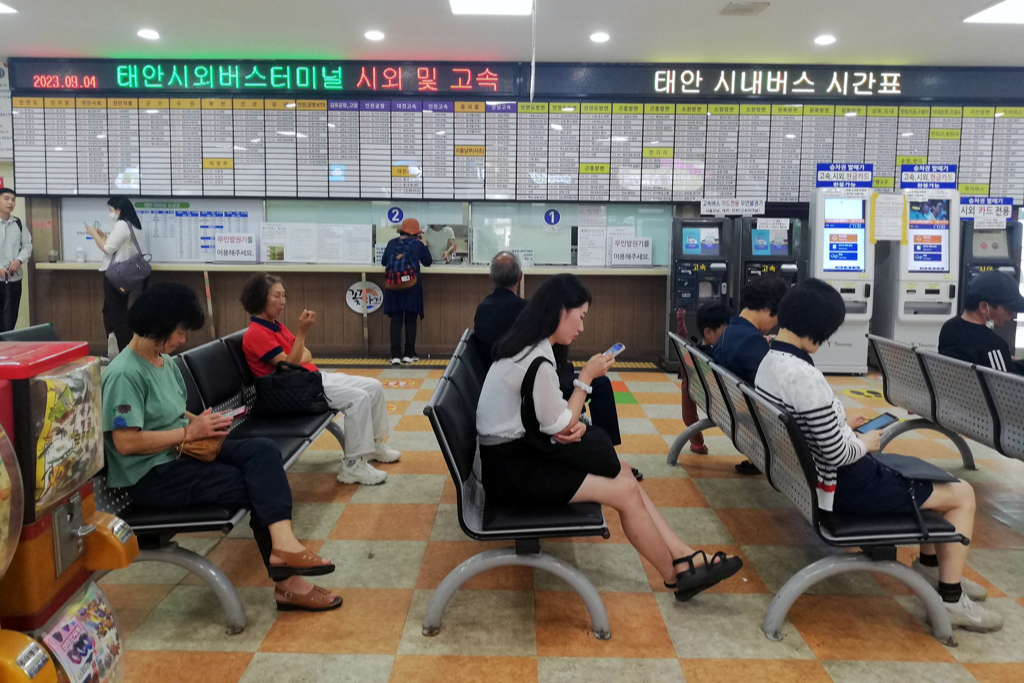
What you have to take into consideration is that there are different terminals for Express buses and Intercity buses. Most of the time, they are right next to each other which might be confusing. Also, in bigger cities, there are various terminals for different regions which are oftentimes located far away from one another. Therefore, double-check from which terminal your bus is leaving.
Inner-City Transport
Now, inner-city transport in Korea is bliss! There is a reliable bus service everywhere. A single trip costs about KR₩ 1,200 as you pay with your T-Money card.

Seoul , Busan , Daegu, Daejeon, and Gwangju also have a subway system which is great and costs as little as a bus ride. However, don’t underestimate the size of Korean cities and the time you’ll spend on public transport.
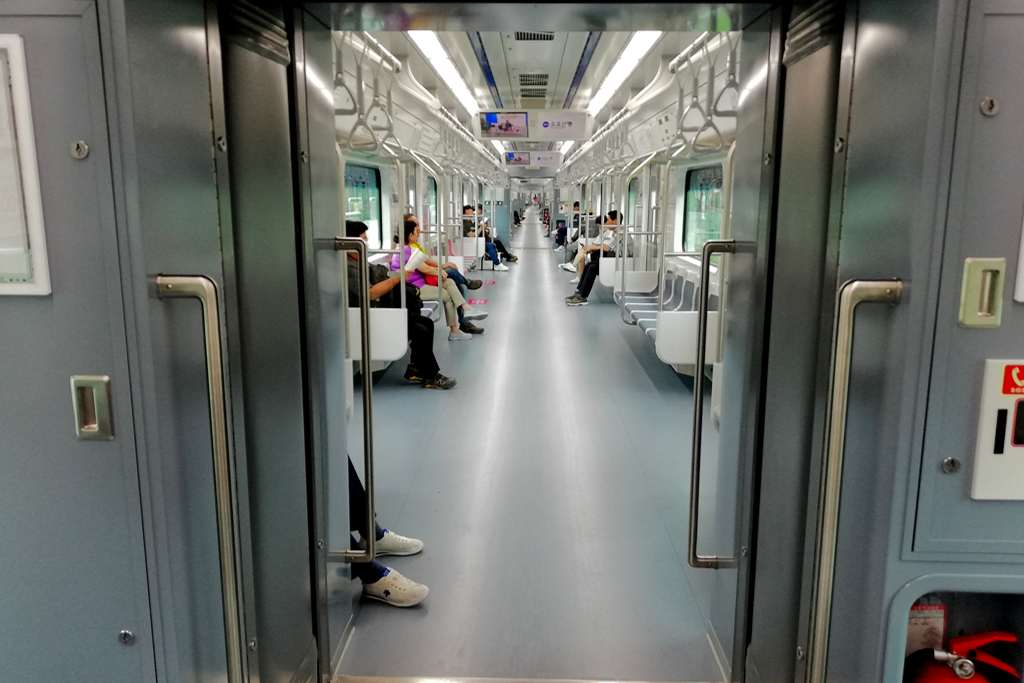
Also, during rush hour in the morning and in the late afternoon, the means of public transportation tend to get extremely crowded. You might want to consider this when planning your itineraries for the day.
Walking And Cycling
Since Korea is such a safe country, you can explore neighborhoods by walking without any trouble. However, as I mentioned above, cities are huge and distances much longer than they appear on Google or Naver maps. Don’t even think about exploring for instance Seoul’s or Busan’s city center exclusively by walking; take this from a traveller who easily walks around 20 kilometers per day when on the road.
Also, keep in mind that alluring parts of cities can be hilly with extremely steep slopes. Make sure to wear sensible shoes like Birkenstocks, trainers, or even light hiking boots.
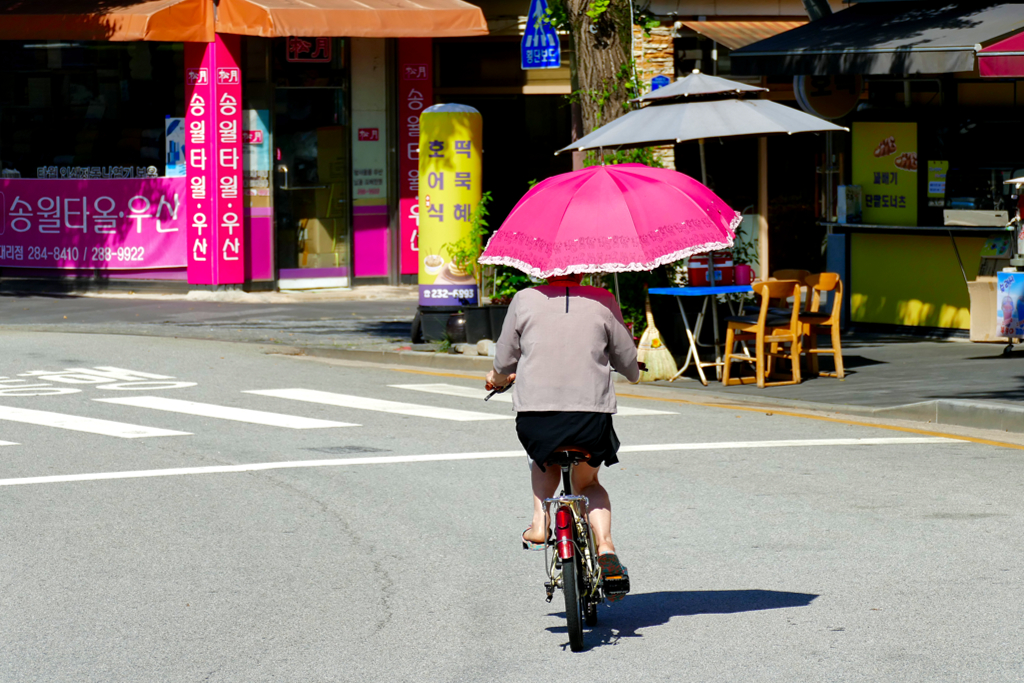
Obviously, in most places, you can also get around cycling. You’ll find detailed explanations of how to rent bicycles in my posts on the individual destinations.
Visiting Organized
Although I’m an avid solo-travelling woman, I sometimes like to join organized tours. Not only are they a valid option to go to remote places since I’m not driving. They also allow me to meet fellow travellers which is great, especially in a country like Korea where a solo traveller doesn’t get in touch with locals easily for cultural reasons and due to the language barrier.
Therefore, here are some great ideas of what to do when visiting Korea. Especially during high season, pre-booking online will guarantee your place at the activity of your choice**:
Where to Stay
Accommodation in Korea is plenty and in general reasonably priced. However, you’ll notice quite a difference between popular metropoles such as Seoul and Busan and places that are less frequented by international tourists.
Even when the furniture and the facilities are not the latest state-of-the-art, your room will always be squeaky clean. Other than in Japan , you won’t find pajamas at your disposal most of the time, but there will always be basic toiletries like body wash and shampoo.
Note that in some hotels, the shower will be connected to the faucet. There will be no basin or shower curtain, you will take your showers right in the bathroom. Therefore, you’ll always find a pair of plastic bathroom slippers so that you don’t need to walk on the wet floor after your shower.
Many hotels don’t offer a breakfast option, but you’ll always find a convenience store, a bakery, and a coffee shop nearby. However, at each and every accommodation, I had a small fridge where I got two bottles of water every day.
Below you can choose from a wide range of accommodations. You’ll find the hotels where I stayed and that I can recommend in the post on the cities I visited. Since pre-booking is highly recommended, use this mask for your convenience when searching for suitable accommodation**:
What to Eat
Apart from Korean music’n’movies, the country’s cuisine seems to be taking the world by storm: In many areas of the world, Korean restaurants are springing up like mushrooms. And in Korea, tasty food can be found virtually everywhere: From vendors in the streets and in local markets to refined versions in posh restaurants. Many of these delicacies were invented over 2,000 years ago. However, some were only enjoyed by the royal families.
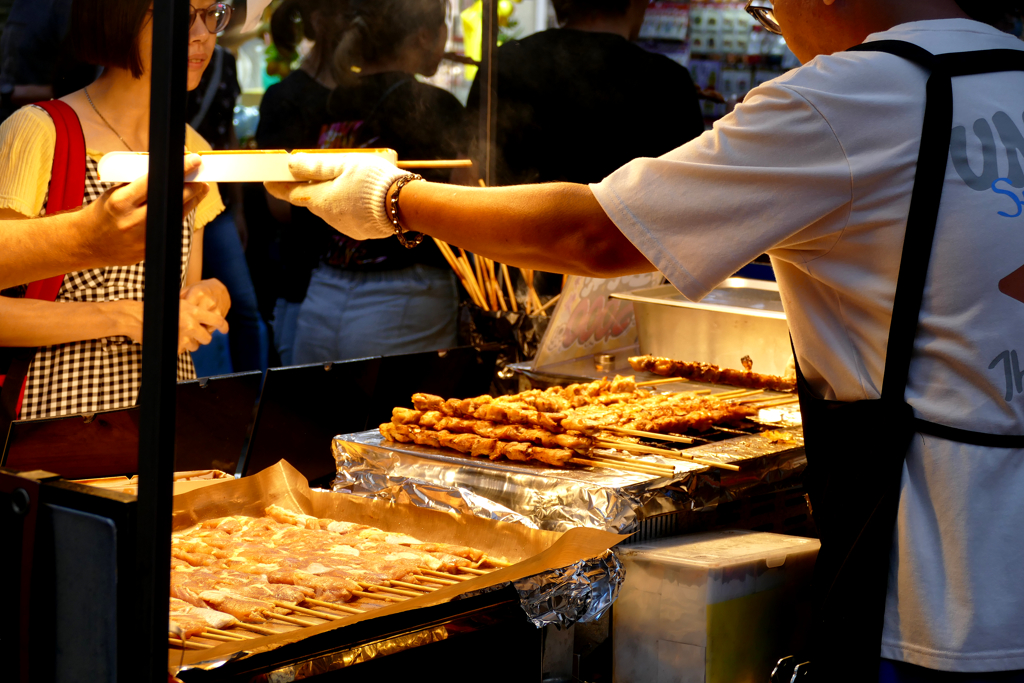
Korean food comes in many varieties as savory, spicy, hearty, and nutritious delights. Barbecue restaurants are very popular. There, various meat dishes are prepared right at the table.
In all modesty, I’m just listing the five dishes that you should definitely try – but there are many, many more waiting for you as Korea’s cuisine is so rich and varied. I’m introducing regional specialties in my posts on the individual destinations – like for instance Gyeongju ‘s Ssambap or Gan-Godeungeo , which is salted mackerel, from Andong .
Bibimbap is arguably Korea’s most popular dish. It’s made with rice and various vegetables like carrots, spinach, bean sprouts, and mushrooms. It can then be topped with beef, tofu, or fried eggs. Indispensable is a generous dash of Gochujang, a slightly spicy chili paste.

As the name derives from bibida , which translates to mix or stir, all the components have to be stirred together before eating although they are served unmixed. Bibimbap is served with a light bean sprout soup and comfortably eaten with a spoon.
Oh, this brings me to a crucial tip: If you wonder how to eat your food as the waiter didn’t bring you any utensils, just look in the drawer underneath your table. There you’ll find chopsticks, spoons, and serviettes.
Tteokbokki is a popular snack dish made from cylindrical rice cakes. They are usually seasoned with Gochujang, but often also with garlic and soy sauce.
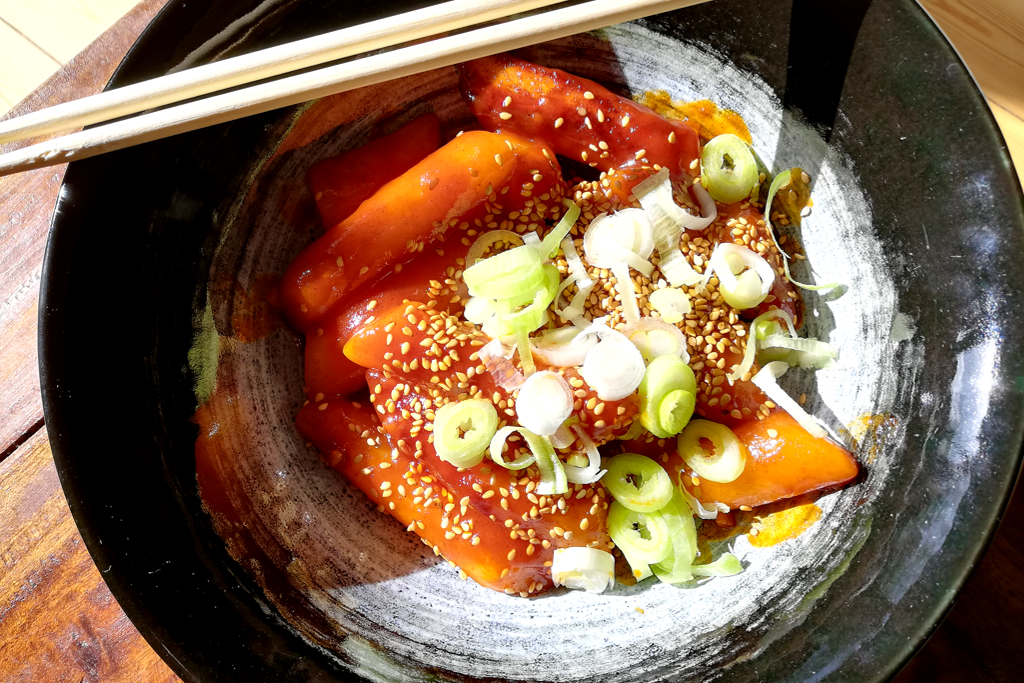
The snack is pleasantly chewy yet very spicy.
Gimbap is very similar to Sushi, albeit you don’t dip it in Soy Sauce and sadly, you don’t eat pickled ginger with it. In Korea, it is a popular snack mostly eaten for lunch.

It always consists of Gim , dried purple seaweed, and Bap , hence cooked rice. Then, other ingredients in various combinations such as omelet, carrots, spinach, pickled radish, surimi, meat, or crab meat are added before the whole thing is wrapped in the shape of a log and cut into bite-sized pieces. These are eaten with chopsticks, obviously.
Bibim Nengmyun
Bibim Nengmyun is cold noodles served in a stainless steel bowl in a cold broth. Then, julienned cucumbers, slices of Korean pear, cold steamed beef, and a boiled egg are added.
The long and thin noodles are normally made from flour and buckwheat or sweet potatoes. However, there are variations of pasta made from seaweed and even green tea.
Yes, you can eat fried chicken basically anywhere around the globe. However, Korean fried chicken takes it to a whole different level. The chicken is coated with a sweet and spicy sauce before double frying it in vegetable oil.
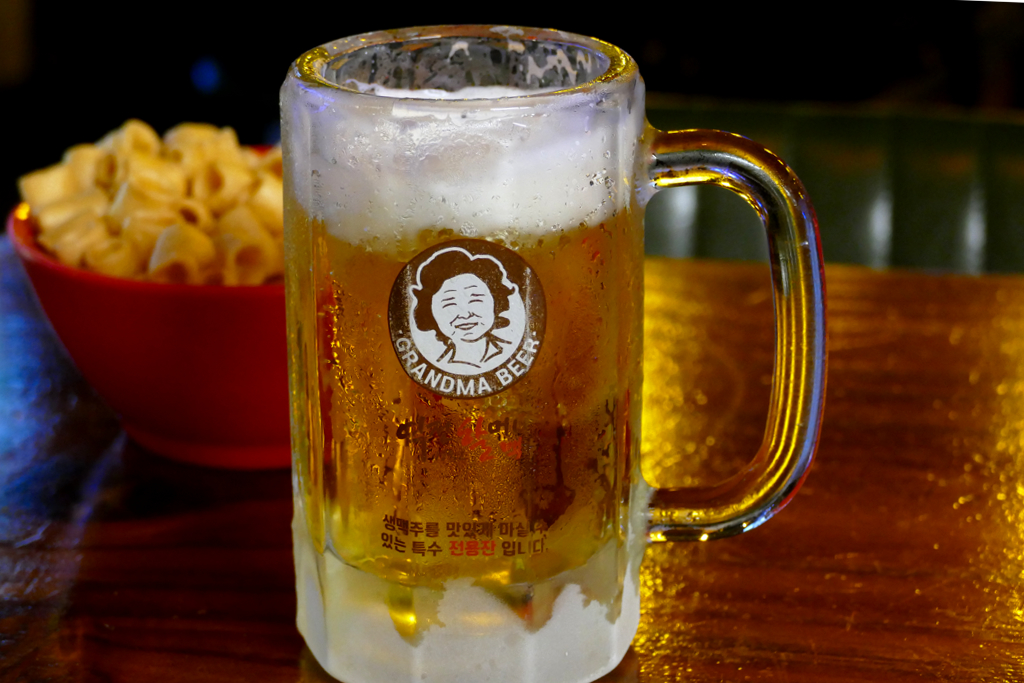
Therefore, the meat remains very juicy while the lightly battered skin is crunchy without being too greasy. It is mostly a popular late-night snack and is typically washed down with ice-cold beer.
Banchan are the most important staple of Korean cuisine. They are a variety of different vegetable dishes served in small bowls. Those are placed in the middle of the table for everyone to enjoy. In some restaurants, you can choose the Banchan you like from an open buffet.
The most famous Banchan is probably Kimchi. Kimchi is fermented vegetables – traditionally Chinese cabbage and Korean radish. Together with rice and a light soup, Kimchi is an essential part of practically every meal in Korea.

As basically all types of vegetables can be fermented, additional types of kimchi have emerged. Apart from cabbage and radish, you’ll be served also cucumbers, leeks, and some local roots. In 2013, Gimjang , the traditional process of preparation and preservation of Kimchi, was added to the UNESCO list of Intangible Cultural Heritage.
12 different kinds of Banchan were the standard at the Royal court
Connection and Communication
In Korea, you can connect to the internet without any issue at basically every museum, eatery, café, and your hotel, obviously, as well as to open Wi-Fi in many public areas.
As I depended so much on a reliable internet connection during my trip through Korea, I highly recommend getting your personal data either by a mobile router or a local SIM card. I kid you not, the few moments I for some reason didn’t have an internet connection, I felt like travelling blindfolded.
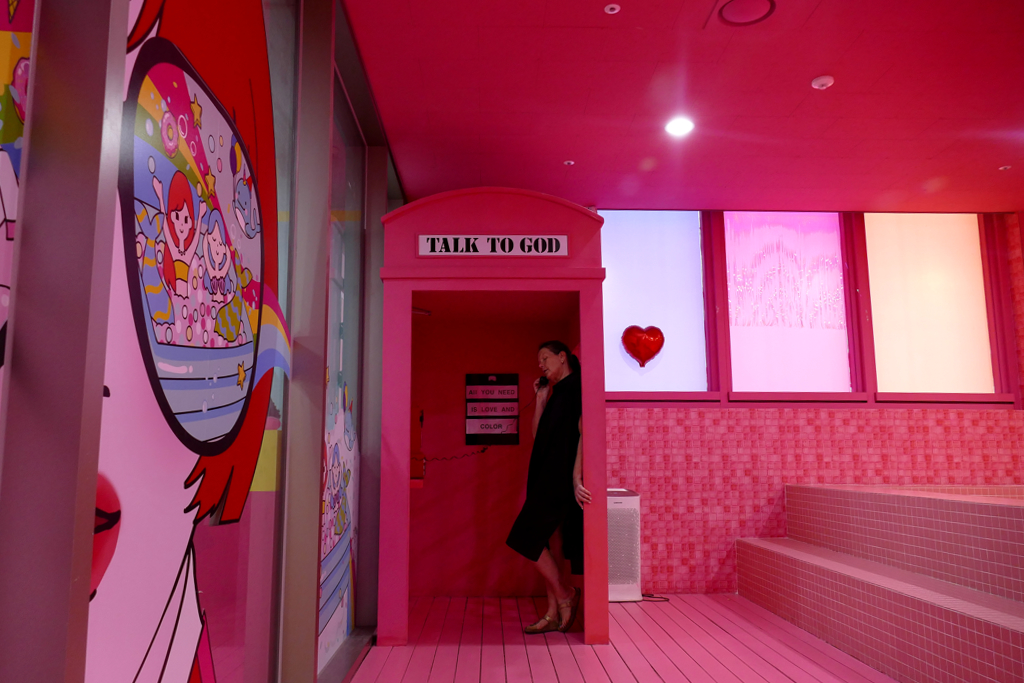
There are prepaid SIM cards by various companies such as KT Corporation, SK Telecom, and LG U+. I got my card from the latter and loved it. LG U+ offers SIM cards, eSIM, as well as portable Wi-Fi. My card came with a T-money that I obtained through GetYourGuide * and picked up at Incheon International Airport on arrival. For unlimited data, they charge between KR₩ 27,500 for 5 days and KR₩ 99,000 for 40 days. I had the 20 days-version for KR₩ 60,500 *.
In South Korea, they use plug types C and F. Their voltage is 220 V, and the frequency is 60 Hz. Whereby, nowadays, in general, all these chargers have integrated adapters so that the voltage and frequency don’t really matter.
By the way, you’ll find this information and many more comprehensive travel tips in my post World’s Most Complete Travel Information – an indispensable globetrotter-classic.
Useful Apps
So now that you have internet, you might want to check out these helpful apps. Well, let me rephrase it: At least a smoothly working map and a translation app are not just helpful, they are actually indispensable!
It’s not correct that Google Maps doesn’t work in Korea at all. You can open the App and see where places are. However, it doesn’t give you useful information on public transport and it doesn’t suggest routes. Yet, it recognizes who you are: The blue dot. So while you can check where you are, you cannot plan out routes.
Fortunately, there are two other Apps in Korea, namely Kakao Map and Naver Map. Since I had tried out the latter and was happy with it, I stuck with it without giving Kakao Map a try.
How to Use It
As you can see in the pictures below, Naver works basically just like Google Maps: You type in from where to where you want to go, specify the date and hour, and choose the means of transportation. Then, Naver does the magic and suggests various options.
However, Naver tends to be patriotic and sometimes transcribes destinations into Hangul so you cannot check that it actually found the place you were looking for. I solved this problem by verifying Naver’s suggestion on Google Maps.
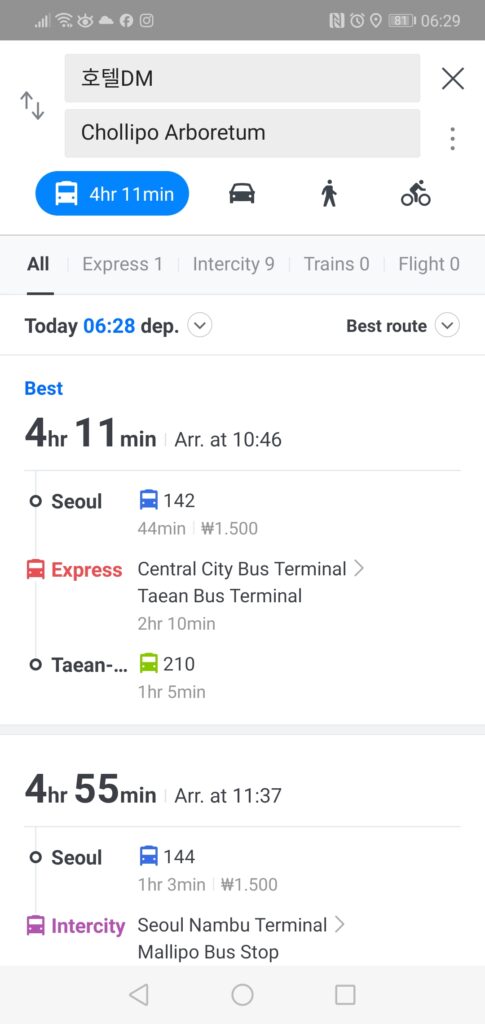
Also, Naver sometimes didn’t show any search results. For instance, if I wrote XYZ restaurant instead of restaurant XYZ. In these situations, I first looked it up on Google Maps, because like I said, it does work insofar as it finds places. Then, I searched for the spot right on Naver’s map. As I found it, I tapped on it on the screen and saved the result for future reference.
Registration Recommended
I set up a free account to save search results. I organized them in folders, you can see them in the second picture.
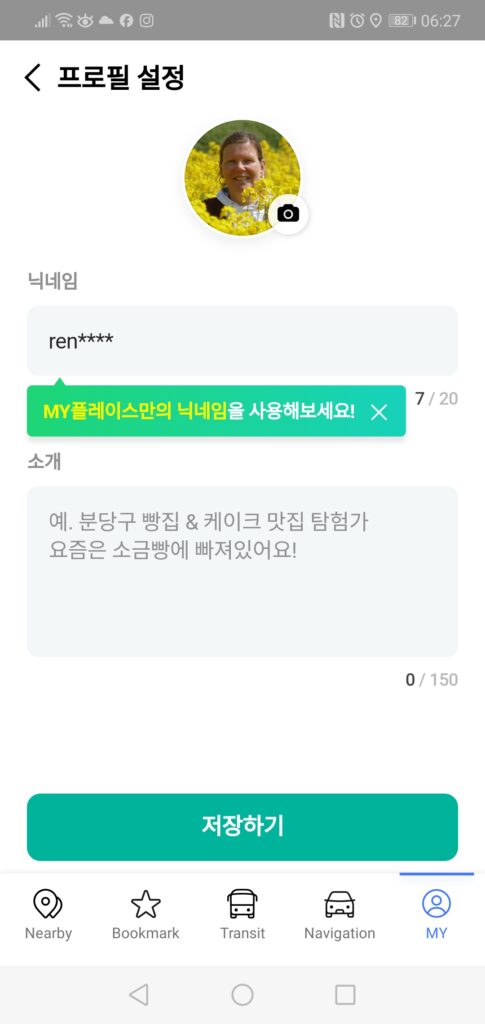
When Naver showed the result in Hangul, I wrote the Latin equivalent in the field for notes before saving. This way, I had the places once and for all in Roman letters, and they also appeared on the map. Eventually, I planned my routes by simply tapping on two marked spots on the map.
You can download the Naver App for Android and for iOS
Microsoft Translator or Naver Papago
Just like it’s a personal preference if you search your way with the help of Naver Map or Kakao Map, it’s totally up to you which translation App you’re using. And even if you don’t choose any of these, most Koreans do have a translator on their phone when they have to deal with foreigners on a regular basis.
For the same reason I chose Naver Map over Kakao Map, I stuck with the Microsoft Translator: I downloaded it first and was happy with it – hence, never change a winning team.
However, both translation Apps offer the same kind of assistance: You can speak, write, or take a picture of a script and the App will translate it.
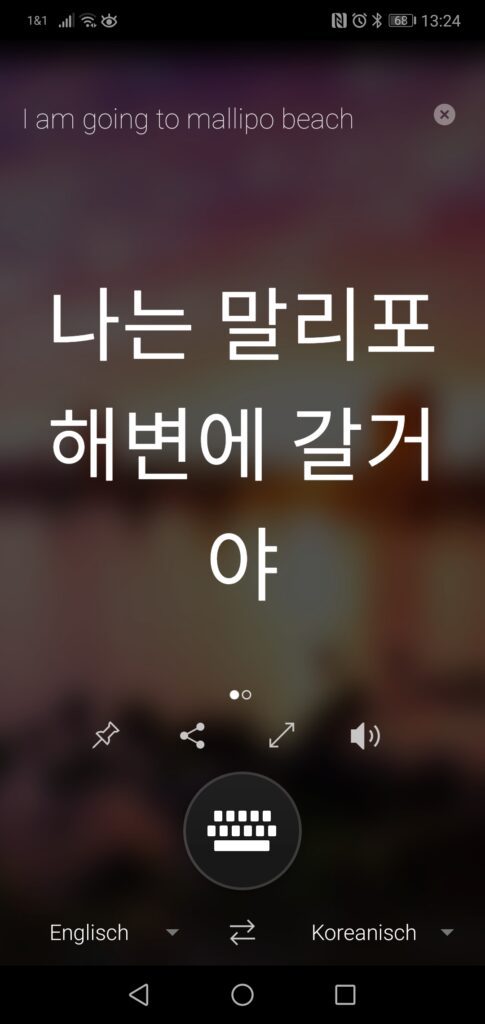
You can download the Microsoft Translator for Android and iOS .
Xe Currency Exchange
Because of its user-friendly operation and quick and easy access to all national currencies, Xe is my favorite currency converter app. You can download it for Android .
Cash And Cards
Talking ’bout money: The currency in Korea is called ₩on and abbreviated KR₩. There are bills of 1,000, 5,000, 10,000, and 50,000 and coins of 10, 100, and 500 ₩on.
As of December 2023, the exchange rate is 1,000 KR₩ = 0.75 US $ ( current rate ) respectively 1,000 KR₩ = 0.70 €uro ( current rate ).

Most of the time, you can pay with either cash or card in Korea. However, some businesses accept only cash while others take only cards. Although payment goes smoothly most of the time, you might encounter some hurdles here and there.
In Korea, they draw a not-so-fine line between local cards and international cards. Therefore, it can happen that certain readers are only suitable for cards issued in Korea. More importantly, you can get only money from ATMs that are suitable for so-called global credit cards.
Either way, it’s recommended to have always at least a small amount of cash on you as international cards may decline for no apparent reason.
T-Money Card
A very Korean means of payment is the so-called T-Money Card. It’s basically a debit card that you have to purchase for an initial price of KR₩ 2,500. You can get the basic T-Money Card at any subway- and train station as well as at convenience stores around the country. However, you can get a free card for instance when buying a SIM Card * or obtaining a Discover Seoul Pass *.
Eventually, you have to charge it with the amount of your choice either at a ticket vending machine or a convenience store. You can top-up the card in units of KR₩ 1,000 up to KR₩ 90,000 at a time. The total deposit cannot exceed KR₩ 500,000. It’s important to know that you cannot top-up by credit card, you have to use cash. Also, I’d recommend topping it up with smaller amounts in case you lose it.
If you don’t use up the credit on your card by the end of your trip, you get a refund at all retail locations. However, they won’t refund the initial price as well as an additional service fee of KR₩ 500.
As I needed both, a SIM card and T-money, I obtained a combined card through GetYourGuide * and picked it up at Incheon International Airport on arrival. Obviously, you can use the T-Money card even after the SIM card expires.
With over 78 million native speakers, Korean is one of the 25 most spoken languages in the world. And let me tell you, it’s basically all Koreans do speak. I was told only the older generation wouldn’t speak any English, young people would. According to my experience in roughly a dozen places in Korea – from big cities to hidden beach destinations – this is not the case. Contrary to older people, young Koreans know some English words. That doesn’t make them English speakers even of a rudimentary kind.
But fear you not, streets, stations, and many signs are written in English, so you won’t get lost. In Seoul’s subway and in many buses the stops are also announced in English. Some restaurants do have English menus, however, when you order the dish, the waiting person might not understand what you want unless you point at the Korean version. Happened to me on various occasions. All this makes travelling through Korea possible even if you don’t speak the language and you’re not familiar with Hangul , the Korean alphabet. But your interaction with locals will remain extremely limited, to say the least.
Howsoever, I recommend memorizing at least this short list of some of the most common courtesy expressions:
My tip regarding pronunciation :
Korean is pronounced rather softly. That means that G is pronounced like K, D like T, and B like P. Also, S before I is pronounced Sh. I’m telling you this so you avoid mispronunciation of cities and places and get what people are talking about when they say Kyongju instead of Gyeongju , Teagu instead of Deagu, and Pusan instead of Busan .
If you actually want to learn some more, I can highly recommend the website 90 Day Korean .
This Is the Route I Travelled
These Are the Places I Visited
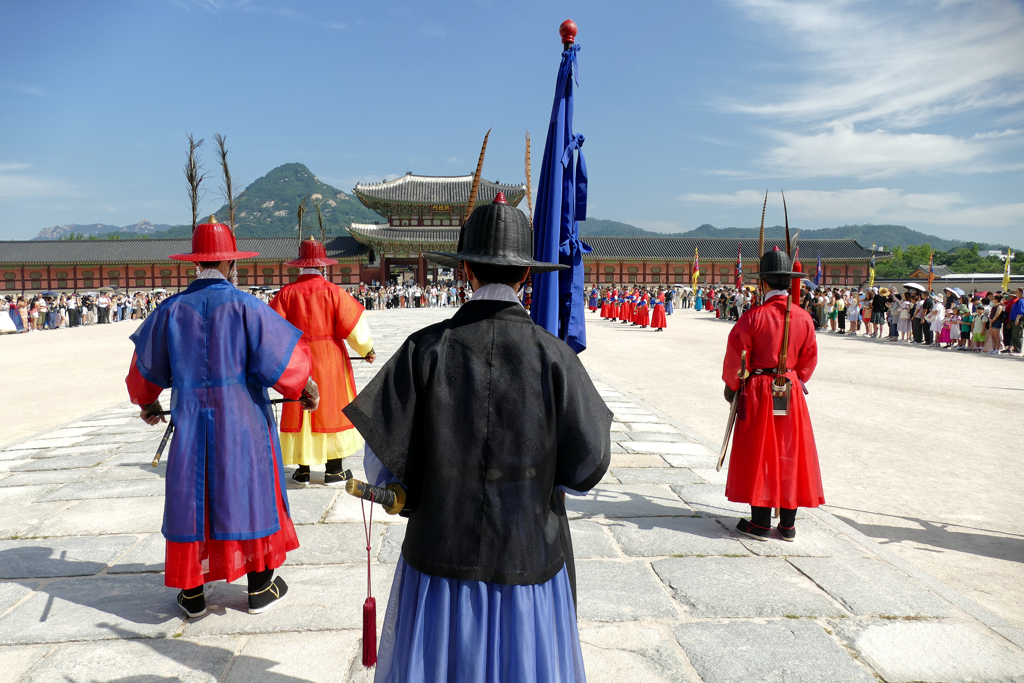
If you choose to pin this post for later, please use one of these pictures:

Did You Enjoy This Post? Then You Might Like Also These:

Five Highlights of KUALA LUMPUR – literally
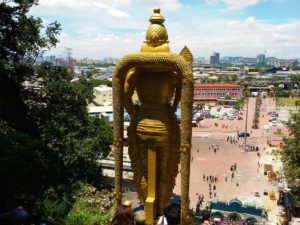
How (not) to behave in SINGAPORE

How (not) to behave in BALI
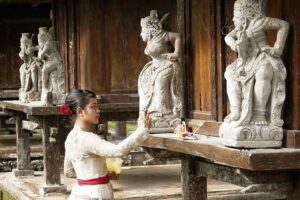
SINGAPORE – first-timers guide to a powerful city-state

24 hours in SINGAPORE
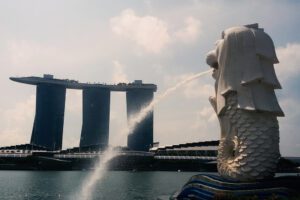
VIETNAM – the highlights in three weeks

PADANG BAI – Gateway to Bali’s Treasures
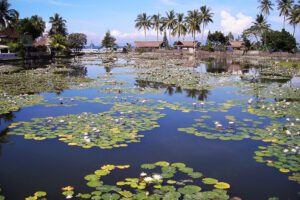
* I received this service free of charge as part of my affiliate cooperation with GetYourGuide for participating in a special promotion. The recommendation of this service is based on my own experience and was in no way influenced by my cooperation partner. ** This is an affiliate link. Hence, If you book through this page, not only do you get the best deal. I also get a small commission that helps me run this blog. Thank you so much for supporting me!
Leave a Reply Cancel reply
Your email address will not be published. Required fields are marked *
Save my name, email, and website in this browser for the next time I comment.
Sign me up for the newsletter!
Deals of the Week European Long Weekends Up to 50% OFF
Fully Guided Tours & Trips in South Korea
Find the right fully guided tour for you in South Korea. There are 69 trips to choose from, that range from one day in length, up to 16 days. The month with the most departures is October, making it the most popular time to visit South Korea.
69 Fully Guided tour packages in South Korea with 392 reviews
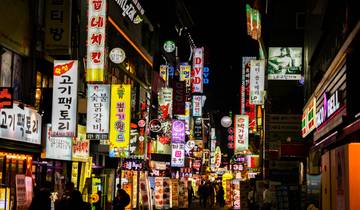
- In-depth Cultural
Best of South Korea
Amazing Rob, was a great guide
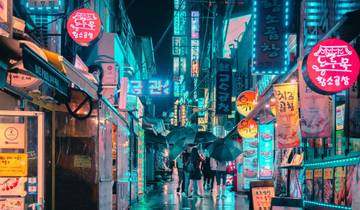
12-Day South Korea Adventure: From Seoul to Jeju Island
The tour is fun. You get to see the sea, mountains, islands, baby volcano. I loved K-Pop class, taekwando class, hiking to Seoroksan mountains, party yacht tour in Busan, tangerine garden in Jeju. Our guide, Damien was always friendly to us and gave all the time good recommendations on food, places to visit at our free time. Just loved it.
- 5% deposit on some dates Some departure dates offer you the chance to book this tour with a lower deposit.
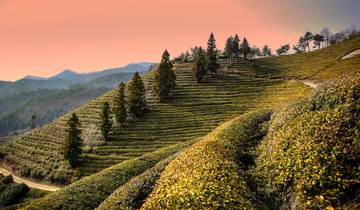
Discover Round Korea in 7days: A Wellness Holiday
Me and my husband enjoyed all 7 days journey in Korea. Our guide JAY is very knowledgeable of Korean history and has unique style of explaining. He take care of us and pay attention to each customer for our need. The restaurants food and hotels we stayed are over our expectations. I’ll recommend to our friends and families to this tour in the future.

- Christmas & New Year
Korea Express
My tour guide Helena was wonderful and I had a great time during this tour!
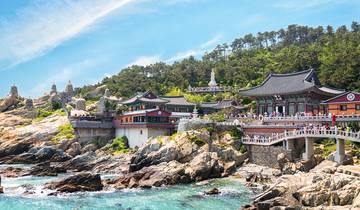
- Sightseeing
South Korea Highlights
Recommendation if you are looking for a tour that's a little different. It's a busy scedule. We had a really great tour guide, with okay English.
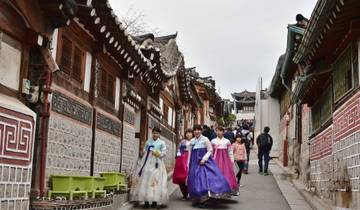
10-Day Premium South Korea Adventure: Culture, Cuisine, and Coastlines
This was my first time in South Korea and the Dragon Tour (Premium) was exactly what I was looking for. The start in Seoul and ending in Jeju was designed perfectly. Even the traditional hanok style stay followed by the Temple stay was timed well. The guide was humorous and down to earth while also sharing cultural and historical information that represented South Korea professionally and personally. The access to street food in Myeongdong was very wise. It let us literally taste contemporary South Korea so that our taste buds were primed to explore more as the tour continued.
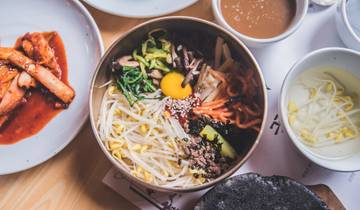
Premium South Korea
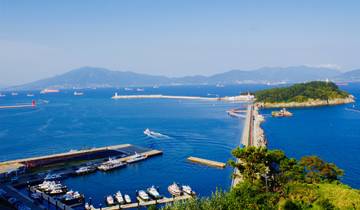
South Korea Circle Adventure 5D/4N
Tour was great and was a good pace. There was quite a large age range of all the travellers. Justin is a great and well informed tour guide
- 10% deposit on some dates Some departure dates offer you the chance to book this tour with a lower deposit.
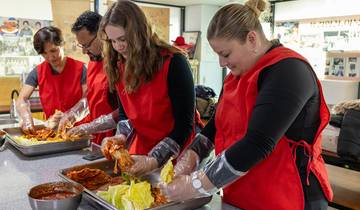
- Food & Culinary
South Korea Real Food Adventure
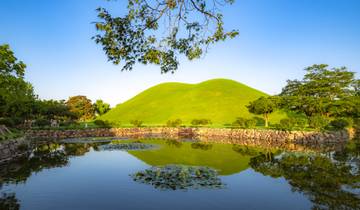
Discover Eastern Korea in 4days: A Wellness Holiday
Jay was a very informative, accommodating, funny tour guide! The food was all local and extremely flavourful. The hotels were all comfortable for a great night rest. Thanks Mr.Jay for all the help and making my Korea visit unforgettable.
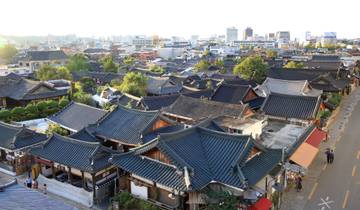

Golden route by K-shuttle
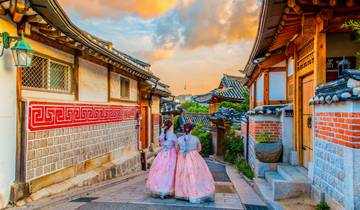
Soulful South Korea
The Soulful South Korea Tour was excellent. The tour guide Sam was excellent. He always provided background and information at all the sites we visited. This tour hits 4 out of the five provinces in S. Korea. I feel like we got see the majority of the country. There was a fair amount of walking but that helped balance all the wonderful food we ate. There were only 15 guests on our tour and that was a nice amount. Most of the travelers were from various states in America and one couple from Germany. Getting to know all the other travels was also a fun part of the trip. It was hard to say goodbye at the end as we felt like a family. Highly recommend this tour if you have never been to S. Korea.
- €100 deposit on some dates Some departure dates offer you the chance to book this tour with a lower deposit.
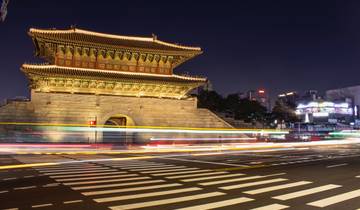
South Korea One Life Adventures - 10 Day Tour
CheongAn could not have been a better tour guide. He went above and beyond in everything he did. He made the tour incredible and an unmissable experience. Not only was he an incredible tour guide but he was also a friend who you felt like you were travelling with, making the experience even more enjoyable. Having a local guide was so helpful and CheongAn was always able to answer questions/help everyone engage with the history and culture of Korea.

Exploring South Korea
A trip of a lifetime !!. We had the most incredible tour guide Damien who has the most warm energy always willing to answer and help out. The intenary was amazing as well I feel that there was something for everyone. I only wished we would have done the cruise to Jeju island and spent more time there but of course, I think that the flight arrangement after it wasn't possible was prompt and very efficient. I enjoyed this trip and feel very lucky to have had the most incredible professional and fun tour guide who we will always remember and a lovely tour group.
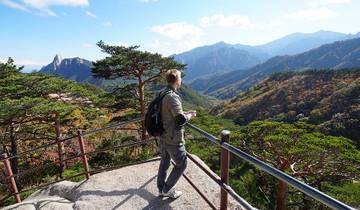
Korean World Heritage Adventure 10D/9N
Was good to see so much of South Korea in a short time. Overall I enjoyed the tour. Didn’t get to enter the DMZ due to tickets being sold out but the schedule had been reduced due to COVID. Also the joint security area has been open to public for a few years and that was what I really wanted to experience, so after learning that it wasn’t so much of a loss. The accommodation varied some good, some fabulous (oh my gosh the Grand Hyatt in Jeju was incredible). If you’re vegan or vegetarian it will be difficult for you to eat (and your tour guide may not care so much depending on who you get). It would be nice if we had more idea of what’s around us when we get dropped at our hotel - e.g., any suggestions of what would be worth seeing in the area. Also eating options (where English speakers can interpret the menu and communicate with staff)- often we would just go to a 7/11 and buy sandwiches or sushi and crackers! Highlights: Visiting the temples where the monks are, underground lava caves in Jeju and the Myeong Dong and Namdaemun markets in Seoul. Will definitely return to South Korea again…
What people love about Fully Guided Tours in South Korea
Our tour guide Tommy Lee was awesome—highly recommended!!
Was excellent tour guide was the best
Regions in South Korea
- Gyeonggi (5)
Travel Styles
- Fully Guided
Discovering Korea - 10-day Self-Guided Tour

- 09 nights accommodation as per itinerary with daily breakfast
- Round-trip private transfer to Incheon /Gimpo Airport by private minivan
- 7 days rental car from Seoul to Busan with an English speaking GPS
- One way KTX in standard class from Busan to Seoul
- Car rental : SOUL, AVANTE MD, AVANTE AD, K3, NEW SM3, AVEO, VELOSTER
- SUV Car rental from 4 pax
- Car Insurance 100%
- Gasoline fee / Any guide service / Optional Activities / Lunch & Dinner
- Any transfer except airport transfer & Tips for driver
- Entry/Admission - Andong Hahoe Folk Village
- Incheon International Airport, 272 Gonghang-ro, Jung-gu, Incheon, South Korea Departure: Incheon airport to hotel in Seoul by private transportation with a driver Car rental pick up in Seoul and drop off in Busan Trip ends at Incheon airport by private transportation with a private driver from Seoul Dates: See Availability
- Not wheelchair accessible
- Stroller accessible
- Service animals allowed
- Near public transportation
- Infant seats available
- Upon arrival, be welcomed by your private driver and transfer to your hotel. We advise you to visit the Gyeongbok Royal Palace ( closed on Tuesdays) to discover the Gyeonghoeru Pavilion and the Hyangwonjeon Basin. You may also attend the changing guard Ceremony at the entrance of the palace (3 times a day). Nearby the Gyeongbok Palace, do not miss the National Folk Museum which houses more than 4,000 relics exposing the ancient Korean lifestyle. Overnight: Seoul 3* Hotel
- Today, we recommend to visit two Royal sites listed as UNESCO World heritage Sites: The Changdeok Palace & its magnificent Garden, and the Jongmyo Shrine Sanctuary. Stroll though Bukchon Hanok Village, also known as the village of the north. There you can observe the superb neighbourhood housing more than 900 traditional Korean houses, some of them being opened to the public. You may also want to take a walk along the famous alley of Insadong, between art galleries, traditional craft shops, tea houses or antique furniture dealers. When the sun goes down, we recommend you to visit the N Seoul Tower, situated at almost 480m above sea level and which is one of the representative landmarks venues in Seoul. There you can enjoy dinner with surrounded by a beautiful panorama of Seoul. Overnight: Seoul 3* Hotel
- After enjoying breakfast and check out of the hotel, pick up your car at the car rental center located nearby Seoul Station, few minutes from your hotel. Then, we recommend you to drive to Suwon to visit the Hwaseong Fortress which is an impressive structure from the latter part of the Joseon Dynasty (1392-1910) and the official fortress of Suwon-si, Gyeonggi-do. Or you may also be interested in visiting the famous Korean Folk village which introduces traditional culture from the late Joseon period through cultural class experiences, shaman faith, seasonal customs and others. In the afternoon, drive south and visit the Songnisan National Park, one of Korea’s most beautiful sites. There you can observe the spectacular sharp granite peaks of Mt. Songnisan and the deep valleys of sedimentary rocks. One of Korea's largest temples, Beopjusa, can also be found on Mt. Songnisan. There you will witness the Cheongdongmireukbul, which is the largest Buddha statue in the world. With its numerous treasures and National Monuments, Beopjusa Temple is the best place in which to experience the brilliant history of Buddhist civilization. Overnight: Cheongju 3* Hotel
- In the morning, we recommend you to visit the Early Printing Museum to see Jikji, the world's oldest extant book, printed by movable metal type, which was founded on March 17, 1992. Then depart for Andong where we recommend to first visit the Dosanseowon confucian school. Then discover the Hahoe Folk Village with its traditional houses, well preserved from the Joseon Dynasty. Do not forget to also visit the mask Museum before climbing the small Buyongdae cliff to enjoy the beautiful view of the hanok village. Overnight : Andong 3* Hotel
- Drive south and continue your discovery with the visit of Haeinsa temple. Up in the Gaya Mountain, observe the Tripitaka Koreana, the most famous national treasure of Haeinsa Temple, which was made as a wish to overcome the national crisis caused by Mongolia Invasion. Down in Daegu City, you will see a great concentration of ancient tombs like those of Bullodong, as well as many markets including medicinal herbs. Overnight: Daegu 3* Hotel
- Free day to discover Gyeongju, also called the open-air museum. We recommend you to start with the Bulguksa temple and the Seokguram cave, true masterpieces of Buddhist art. You can end the day by relaxing at one of the thermal springs near the lake.
- Overnight: Gyeongju 3* Hotel
- Second day in Gyeongju. Visit the Cheomseongdae Observatory, the oldest existing astronomical observatory in Asia. Then the Tumuli Park with its twenty-three large Royal tombs. In the afternoon, we recommend you to visit the Gyeongju National Museum, and at sunset, take a walk around Anapji. Overnight: Gyeongju 3* Hotel
- On the way to Busan, we advise you to stop at the Tongdosa Temple, which similar to a museum because of the numerous relics inside. Then, upon arrival at Busan, we recommend you to visit the famous Jagalchi fish Market, biggest seafood market of Korea, where fresh seafood are sold by energetic Korean women. Then take a walk around the Nampodong streets, the best place in Busan for shopping. Continue to the Busan Tower with its observatory offering a breathtaking view of the marvelous city of Busan. At night, take a walk around the most famous beach of Korea : the Haeundae beach. Overnight: Busan 3* Hotel
- Morning free for more visit of Busan. In early afternoon drop your car off at the Busan station Car rental center and take the KTX back to Seoul. Overnight: Seoul 3* Hotel
- Pick up at your hotel and transfer to the airport.
- No heart problems or other serious medical conditions
- Travellers should have a moderate physical fitness level
- There are attractions where service animals are not allowed to enter like Jongmyo Shrine and some temples and museum. Possible to take a KTX train, but it's mandatory that pets put in exclusive carrier boxes and have vaccination certificate.
- Infant seats needs to be booked in advance and pay for extra charge.
- This tour/activity will have a maximum of 4 travellers
- If you cancel at least 7 days in advance of the scheduled departure, there is no cancellation fee.
- If you cancel between 3 and 6 day(s) in advance of the scheduled departure, there is a 50 percent cancellation fee.
- If you cancel within 2 days of the scheduled departure, there is a 100 percent cancellation fee.
More to explore in Incheon

Discovering Korea - 10-day Self-Guided Tour provided by Travel in South Korea with the top leading Korean Travel Agency: Aju Incentive
Fully Guided Hiking Tours
Fully guided 6 day hiking tour.
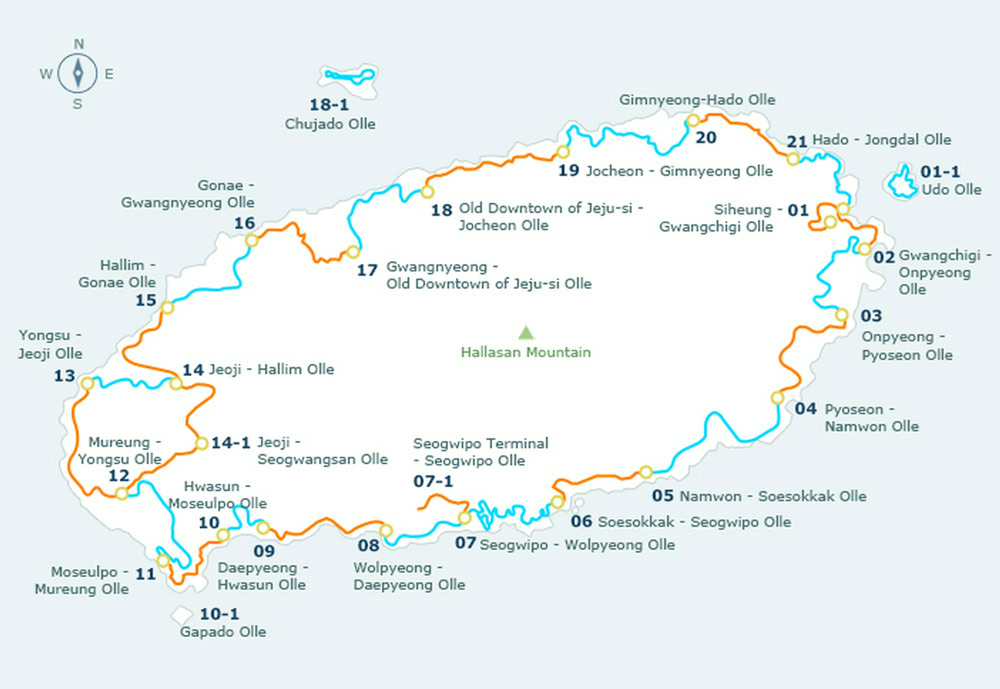
Photo gallery
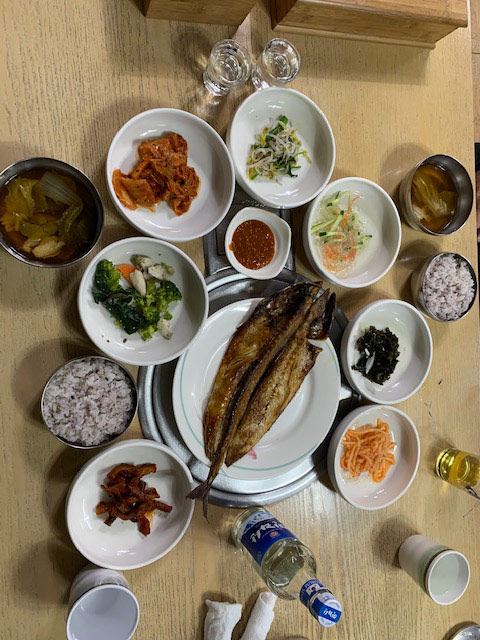
[email protected]
Send an online enquiry.
- The Pied Piper Video at Brooms Head on Sat 20th June 2020
- The Road Trip Video at Coolongolook on Mon 21st Sep 2020
- The House of Fun Video at Sydney Opera House on Mon 21st Sep 2020
- The Muttonbird Island Music Video on Wed 28th July 2021
- The Dorrigo Steam Railway Video on Thurs 29th July 2021
- The Dancing in the City Video at The Rocks on Mon 22nd Nov 2021
- Pittwater & Killcare Video on Thur 25th May 2023
- Introduction
- Marcus’s hiking background
- About the trail
- Trail options
- What sort of fitness do you need to do this walk?
- Who hikes the Kumano Kodo?
- Training requirements
- Japanese culture
- Trip highlights
- About Home Comforts Hiking
- Interview with Helen Wallis about her 2018 trip
- Interview with Kellie Briggs 2019 trip
- Hot Springs – Onsen
- Spring vs Autumn
- Don’t forget the trekking poles
- It may not be long but those hills!
- Sister Trail to the Camino
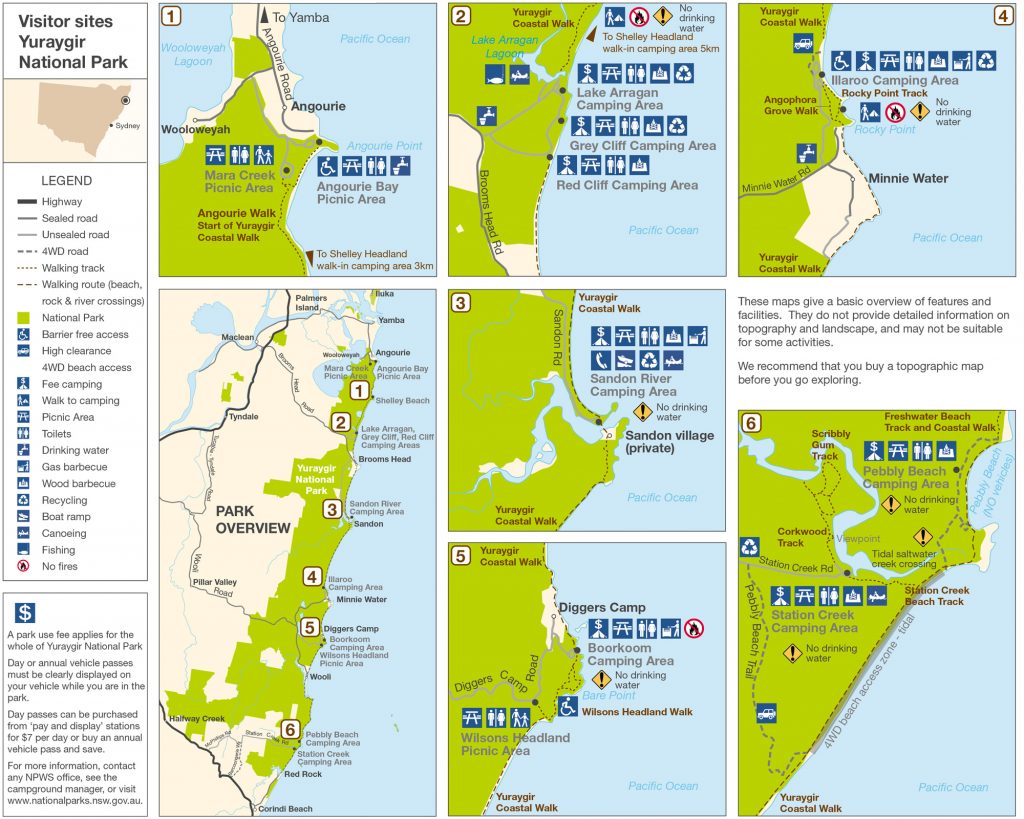
Day 0, 7 September 2019
The drive to Red Rock was an easy 5 hour trip with little Saturday traffic and no road works. As we neared Red Rock, the fires to the east looked serious and aircraft were water-bombing. There was plenty of smoke.
Red Rock is a tiny coastal village with one busy shop and caravan park the only retail establishments. There are however new subdivisions to the south. The group assembled and we were bused to Yamba, the driver a cheery 82 yo lady. The Yamba Hotel looked familiar and a call to Graham confirmed that we had attended Gerry Ryan's wedding there in the '80s sometime. It was in the same dilapidated state but the view could not be faulted: gorgeous.
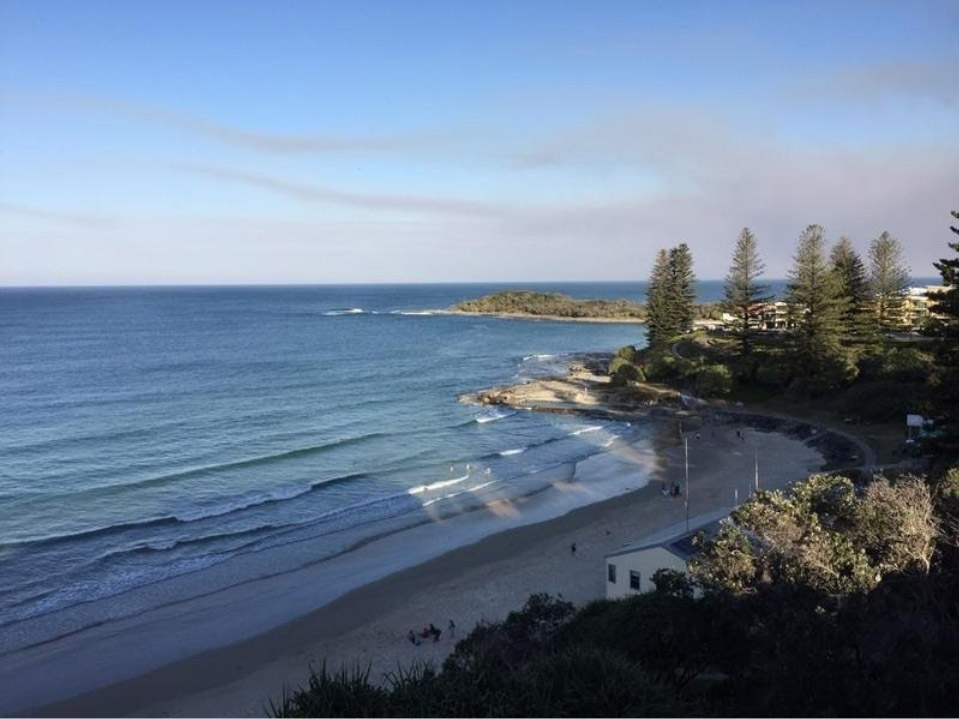
SMOKE Day 1, 8 September 2019 - Angourie to Brooms Head - 17 km - 4 hours walking - 226m elevation gain - 183m elevation loss - av temp 27 deg C
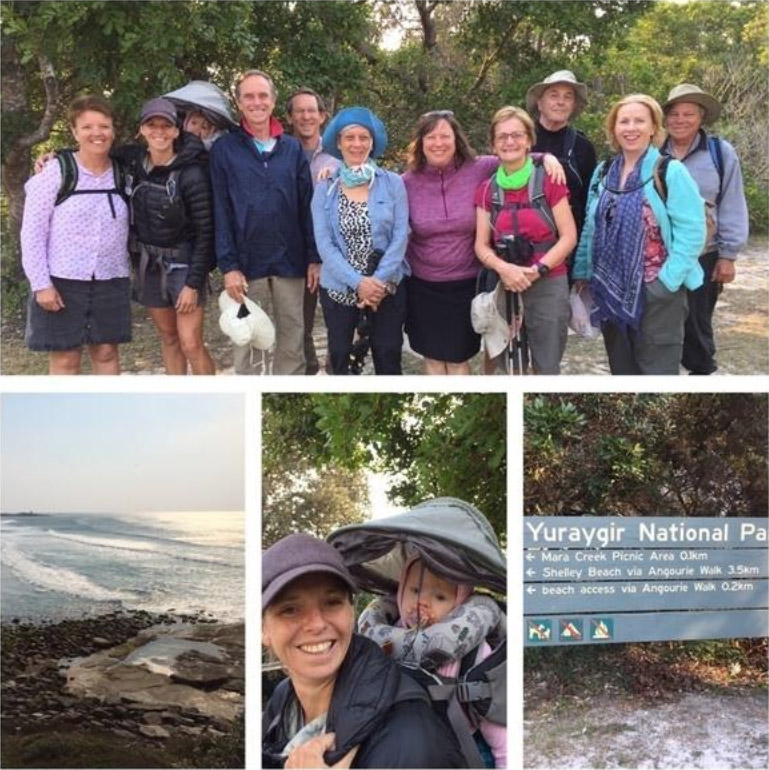
SAND and FLIES Day 2, 9 September 2019 - Brooms Head to Minnie Waters - 20 km - 6 hours walking - 228m elevation gain, 208m elevation loss
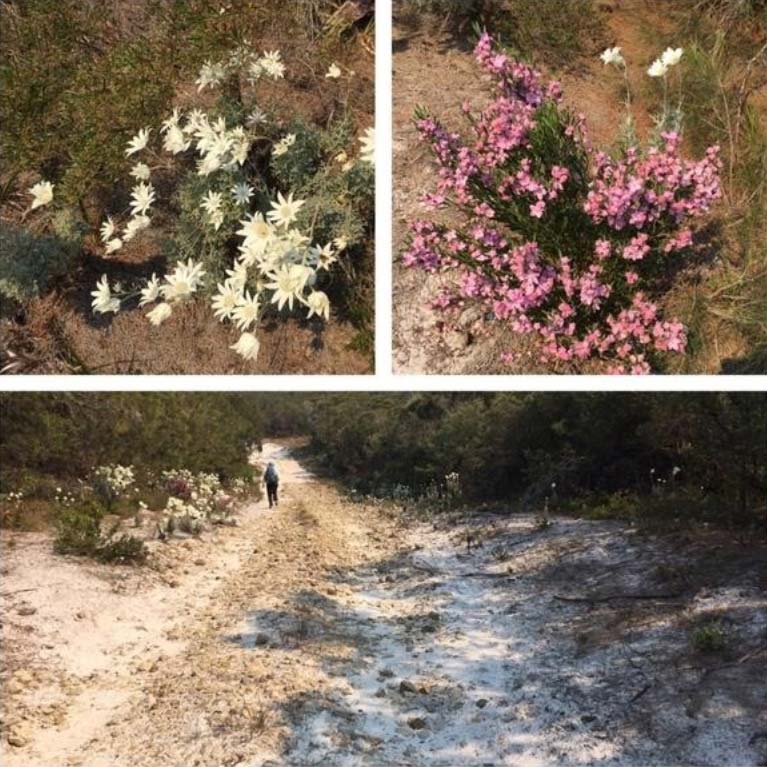
WIND Day 3 - 10 September 2019 - Minnie Waters to Wooli - 16 km - 3.5 hours - 335m elevation gain, 364m elevation loss - av temp 24 deg C
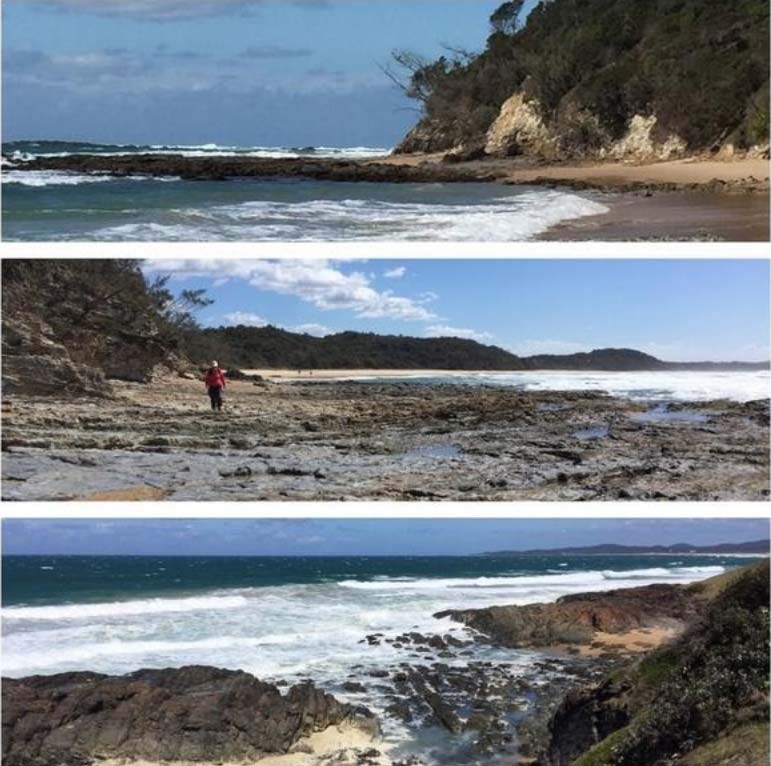
ROCKS Day 4, 11 September 2019 - Wooli to Red Rock - 15.1 km - 3.5 hours walking time - 335 m elevation gain, 364 m elevation loss - av temp 25 deg C
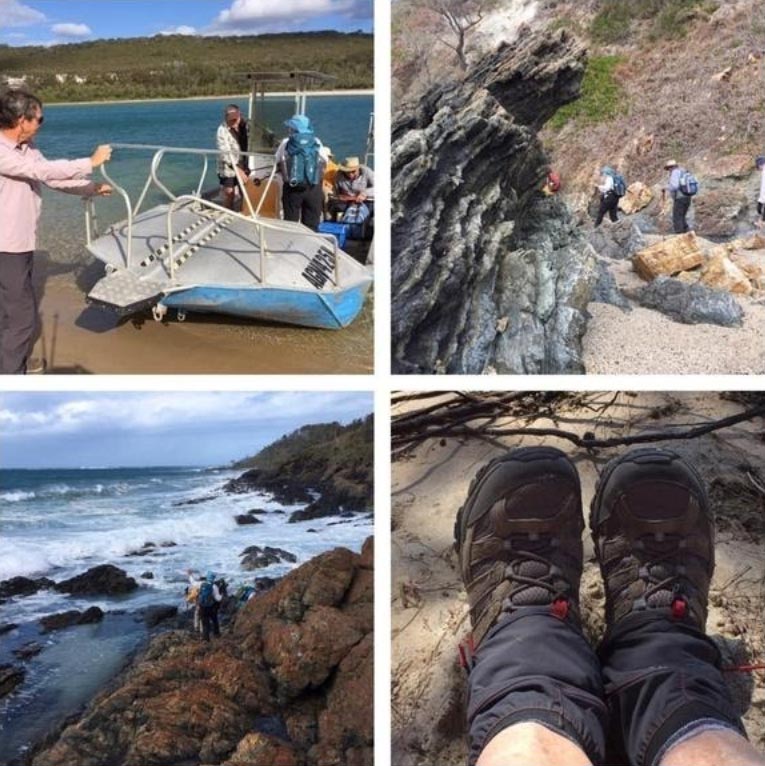

- Find Bike Tours
- Country Guides
- Classic Bike Routes
- Guides and Articles
- For Tour Guide Organizers
- Terms and Conditions
- Privacy Policy
- Affiliate Disclosure
Go Bicycle Touring in South Korea

South Korea is a country consisting of the southern half of the Korean Peninsula, it has a population of fifty million people, and covers a total area of 100, 210 square kilometers. It is a world leader in innovation, and is the world’s largest exporter of goods. It also has the world’s fastest internet connection, and is geographically diverse. Most of the country’s population live in it’s capital city of Seoul. Most of it’s terrain is largely mountainous and there are over three thousand islands situated off the west and south coasts – most of which are uninhabited.
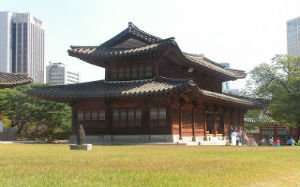
Popular Bike Tour Destinations In South Korea
- Seoul is South Korea’s capital, and one of the world’s most populated cities. The city’s outskirts are home to Namhansan Mountain Fortress, the Suwon Hwaseong Fortress, the Everland botanical greenhouses, and picturesque Korean folk villages. Seoul has it’s own bike-hire service, and is often the start point for any long-distance riders.
- The Hangang Parks of South Korea are dotted throughout the outskirts of Seoul. These parks offer numerous dedicated bike paths and various other sporting facilities. The perfectly paved bike paths take you through the outskirts of Seoul, keeping you in touch with the beautiful, natural side of South Korea’s sprawling metropolis.
- Andong is the home of Korean folk music. It also boasts many Confucian studies and academies, dating back to the Joseon Dynasty. The Nakdong river flows through the city, as does one of several dedicated and protected bicycle paths – the result of the above-mentioned 4 River Route. These trails make the city of Andong perfect for bicycle tourists and road cyclists.
- Jeju Province is an island province which lies in the Korea Strait. Two cities cut the island in half, horizontally. Jeju City – the province’s capital, and Seogwipo which makes up the southern half of the island. Jeju province is also home to volcanoes, the main volcano (and South Korea’s tallest mountain), named Halla-San lies dormant overlooking Jeju City. Due to it’s unique landscape, the island is popular among bicycle tourists who wish to catch a glimpse of a totally different side to the country.
- Gyeongju is a city located on South Korea’s southeastern coast. It is home to ancient South Korean architecture, including the Cheomseongdae Observatory, Seokguram grotto, the Gyeongju Tower, and the Bulguska Temple. Among the architectural marvels in the city, is the Yandong Folk Village, which is designated as a UNESCO World Heritage Site. Beyond the city limits, there are magnificent rolling hills – so, no matter whether you want to stay in the city (you can rent a bike to see the sights!), or go out into the countryside, Gyeongju allows you to do both from the saddle.
Explore Korea!
Explore korea (8 nights/9 days) is our first self guided bicycle program. your adventure will start in the….
- South Korea
Cycle Across Korea: Damyang to Jeju Island
This uniquely designed bike tour program will guide you on two wheels from seoul to jeju island (total…, dream bike tour korea: seoul to andong, this uniquely designed bike tour program will guide you on two wheels from seoul to andong (total distance…, crossing korea from seoul to jeju on bike.
This uniquely designed bike tour program will guide you on two wheels from Seoul to Jeju Island (total distance about 640km).
During your trip, you will ride on safe segregated Korean bike paths and have the opportunity to discover the Korean culture through a variety of programs such as sightseeings, food, meeting other Korean riders, accommodations, etc.
Wellness and Culture in Korea on bike
We are happy to offer international bicyle riders the “Wellness and Culture in Korea on bike” created by our team.
This uniquely designed bike tour program will guide you on two wheels from Seoul to Gyeongju (total distance about 450km).
Dream Bike Tour Korea
This uniquely designed bike tour program will guide you on two wheels from Seoul to Andong (total distance about 370km).
Facts About South Korea
- South Koreans love sweet potato. Every possible dish is flavoured in some with sweet potato – including main courses, desserts, chips, latte, bread and salads.
- The Organisation for Economic Co-operation and Development has declared South Korea as the nation with the highest estimated national IQ.
- South Korea is the only country in the world that’s citizens enjoy a full internet connection of 100MB.
- South Korean newspaper companies currently print sixty-three daily editions.
- Tipping is not a requirement in South Korea. In fact, a waiter may chase you and tell you that you’ve left change!
- South Koreans believe that writing someone’s name in red ink harbours bad luck towards that particular person. They believe that because when a South Korean dies, his or her name is written in red ink in the family register or funeral banner.
- South and North Korea have never signed a ‘peace treaty’, this means that – officially – the Korean War has not ended. Instead, the two nations agreed to, and signed an armistice – which is a cessation to hostilities.
- In combination with the country’s high intellectual quotient, South Korea also has the second-highest graduation rate in the world – with 93% of it’s students graduating from secondary school education.
- The Seoul underground railway system is used by 4.4 million people per day. It is the eighth-largest underground railway system in the world – with over 200 kilometers of track.
- Central heating has been a staple in Korean housing for centuries. Originally, before more sophisticated methods were discovered, trenches carried warm air from the kitchen fire and directed it under floors.
Photos by Emmanuel DYAN , Arthur Chapman and yeowatzup .
South Korea Self-Guided Tours

- See all photos

Seoul Self-Guided Audio Tour
Most Recent: Reviews ordered by most recent publish date in descending order.
Detailed Reviews: Reviews ordered by recency and descriptiveness of user-identified themes such as waiting time, length of visit, general tips, and location information.
South Korea Self-Guided Tours - All You Need to Know BEFORE You Go (2024)

- Walking holidays
Walking Holidays in South Korea
With the Winter Olympics bringing the focus to South Korea, have you ever thought about this country as a destination for your next trip?
South Korea has certainly never seen the volume of visitors as some of its Asian neighbours and remains a land of mystery for many, yet here lies a dynamic country, rich in history and culture. Vibrant cities lie within its borders, rich landscape unfolds and there is so much beautiful nature to be seen.
We’ve picked some of our top places to visit and we are absolutely positive that you’ll find walking in South Korea as interesting and exciting as it sounds.
Seoul is the capital of South Korea and is a huge metropolis where modern day skyscrapers meet beautiful Buddhist temples. Even if you are walking in South Korea to soak up their delightful countryside, you should definitely pay Seoul a visit, and seeing it on foot is the perfect way to explore.
Stroll along the Han River or find peaceful walks in the city’s Namsan Park and definitely don’t miss seeing the Grand Palaces.
Gyeongbokgung Palace is the largest of Seoul’s five Grand Palaces and is a beautiful sight to see. Stand under the Palace roof and look up to see the amazingly intricate detail painted on the eaves, or stroll around the garden and see lotus ponds and ornate statues.
If you fancy getting into the hustle and bustle of the city then head for Sejong Centre where you find loads of cafes and restaurants, amid amazing artwork, fountains, statues, palaces and lots of people enjoying this vibrant place.
Baekdu Daegan
This 460 mile trail actually crosses North and South Korea. When walking in South Korea, the Baekdu Daegan trail takes you along this beautiful section of the mountain range and with 70 % of the country being covered in mountains it is great to walk them to gain a real sense of what the country is all about.
Some of South Korea’s most amazing temples lie on this trail and you’ll gain an insight into the rich history of the country whilst meeting the wonderfully friendly locals along the way. Many offer a place to stay for the night so that you can continue your walk in the morning.
The sansin-gaks shrines you will see are dedicated to the mountain spirits and locals praying here is very much a part of Korean culture.
Look out for the intriguing and beautiful types of mushroom whilst you walk, from the Roe Deer’s Ass to delicate fungus as tiny as your little fingers, they’re quite unlike any you may have seen before.
Songnisan National Park
Songnisan National Park is made up of Mount Songnisan and the beautiful valleys surrounding it. Although it attracts many, many people each year it offers a great place for walking in South Korea with easy routes and spectacular scenery.
On wet days clouds often catch in the valleys between the mountains which creates a really dramatic layered scene. In the spring brilliant pink azaleas bloom on the mountainsides whilst at other times of the year the mountains have a craggy look with interesting granite out-croppings and cliffs.
You don’t need to be a seasoned hiker to walk here, the mountain ridge curves along the valley from South to West and contains eight small peaks.
There are buses that you can jump on that will take you into Songnisan National Park, its about a 90 minute journey from Daejeon Intercity Bus Terminal and there are plenty of inns and guest houses so you’ll easily find somewhere to stay. The village itself is quite lively with bars and places to eat.
Juwangsan National Park
Juwangsan National Park is famed for its deep gorges and thick forests and part of the Taebaek mountain range
The Jobong trail is the most popular and passes two amazing waterfalls as you walk along the valley and is a fairly easy trail.
This park is probably one of the most inaccessible though, located in Gyeongsangbuk-do, the park is about as isolated as you can get on the peninsula without being in North Korea. Public transport in South Korea though is great and you can get here by bus in about an hour from Andong, the closest sizeable city.
There are a number of places to stay but it is a lot less busy than previously mentioned Songnisan National Park and you’ll find the trails really peaceful.
Highlights here include rocky peaks, caves and magnificent waterfalls.
Cheongsando Island
If you are walking in South Korea then be sure to pay Cheongsando Island a visit, it is located off the south coast of the Korean peninsula and is part of the Dadohae National Park.
This is a calm, picturesque and serene island where chilled vibes and beautiful scenery await you.
The walking trails on the island are called ‘slow trails’ and the eleven paths make up 42.2 km. Along the way you’ll encounter an observatory with sweeping views of Cheongsando and nearby islands, the steep cliffs along the shoreline, terraced rice paddies, gorgeous beaches and quiet, calm villages.
If you need some chill time to find some peace and tranquility then this is the place for you.
People also read

Interesting Places to Visit in Canada
The North American country of Canada is a well loved favourite of many a traveller. With big and beautiful cities, the Rocky Mountains […]
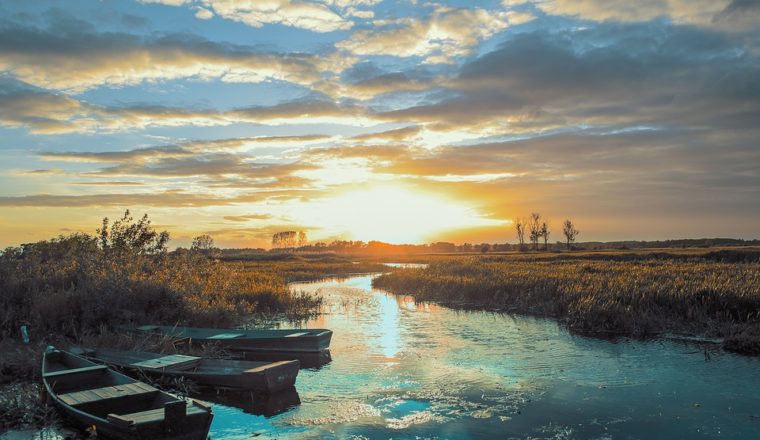
Why Poland Is Great For A Walking Holiday
It may come as a surprise to some or be old knowledge to others, but Poland is an absolutely perfect destination for a walking […]
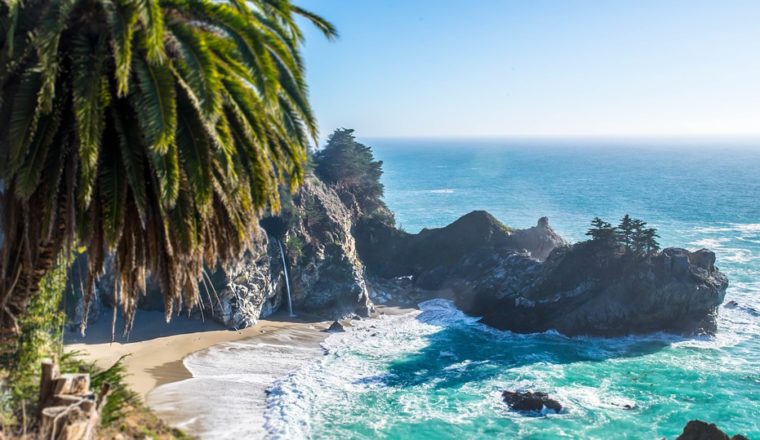
Chasing The Sun: The Best Destinations To Visit Each Month Of The Year
Some of us are just sun lovers through and through, we will do whatever we can to be in the warm weather and will […]
6 New Zealand Walks that are Simply Stunning
If you are thinking of visiting New Zealand or already have plans to go over there then you are going to be in for […]
Search for your perfect holiday
Sign up to our newsletter.
Sign up to receive the latest information on World Walks
- Our Holidays
- Destinations
- Your Photos
- Booking Process
- Terms & Conditions
- Privacy Policy
- UK: +44 (0) 1242 254353
- USA: +001 800 671 9863

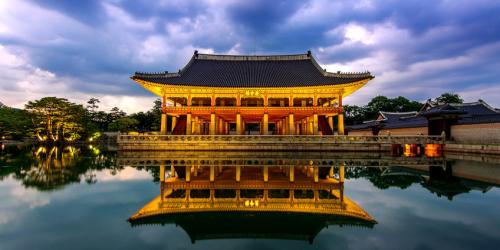
Visit Seoul, South Korea capital city and its royal palace
©Tawatchai Prakobkit/123RF
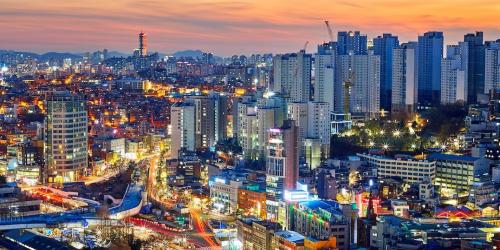
Seoul, a beautiful and connected city
©Mathew Schwartz/Unsplash
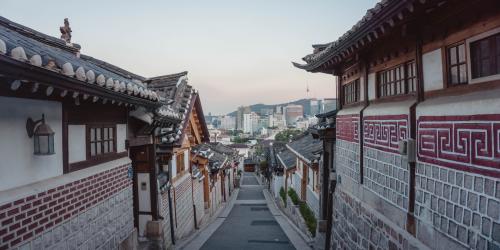
Take a step back in time by visiting the Seoul old streets
©Yeo Khee/Unsplash
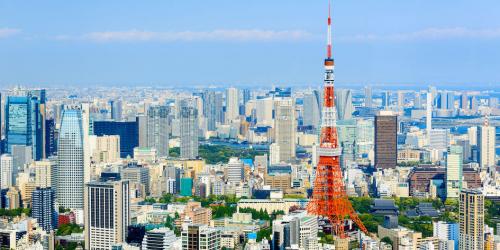
The Tokyo Tower, built in 1958, is inspired by the Eiffel Tower
©Pumidol Leelersakulvong/123RF
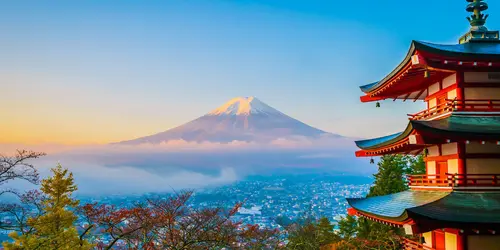
Mount Fuji from Kawaguchiko pagoda
©siraphol/123RF
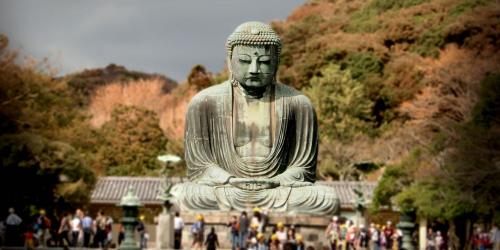
For nearly eight centuries, the great Buddha has watched over the ancient capital of Japan in Kamakura
Sanil Chitrakar
- Travel insurance
- Japan Experience
Seoul & Tokyo
- Duration : 9 days
- Locations : Seoul, Tokyo
- Add to favorites
A tour of South Korea and Japan : visit Seoul and Tokyo on this self-guided tour.
In the heart of Asia, these two modern capitals also have a traditional side to discover. Accommodation , internal transport and travel between South Korea and Japan are included.
Set off on this trip to Asia with peace of mind!
1 week itinerary in Seoul and Tokyo (9 days)
- Departure city/airport : Seoul (Incheon Airport : ICN)
- Seoul (3 nights)
- Tokyo (5 nights)
- End Return airport : Tokyo (Narita : NRT or Haneda : HND )
Please find below the itinerary details.
Tour length : 8 nights / 9 days (+ 1 day at the beginning if you leave from Europe)
Indeed, the tour departure and end dates presented on this page relate to your stay in Japan. On departure, you will have to leave Europe on the day before. The return flight is on the same day due to the time difference.
Example :
- Departure from Europe : January 1st
- Arrival Seoul (date to be selected in the tour calendar while booking ) : January 2nd
- Return flight from Tokyo : January 10th
Why this trip to Japan ?
- Our team will welcome you at each airport (Seoul and Tokyo)
- Get settled in the heart of the 2 capitals in your 3* hotels chosen for their comfort and location
- Take advantage of the transportation included in the 2 Asian capitals
- Have a comfortable flight and airport transfers between the 2 cities
- With your tickets , climb to the top of the Tokyo Sky Tree , 634m high
- Enjoy unlimited internet access thanks to your pocket Wi-Fi
- If needed, contact our bilingual Japanese/English-speaking assistance team available 7/7
- Numerous guided days or other optional activities available
- Benefit from the expertise of Japan Experience , European leading travel agency in Japan
Your trip in detail
Day 1 : wake up in the land of the morning calm.
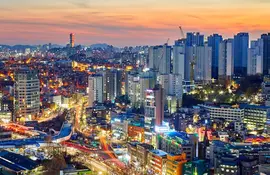
Arrival at Incheon Airport in Seoul. You will be met at the airport by an English-speaking specialist. They will give you your travel documents for Korea, including your transport pass, and accompany you to your hotel in the heart of Seoul. Check-in at the Nafore Hotel or same category hotel 3* in the center of the capital.
Day 2 : A stunning capital

Self-guided tour of Seoul and its region.
A few must-sees: - Cheonggye Square , from which you can see the city along the river. Total relaxation! - Gyeongbokgung Palace, one of the largest in the country. - The impressive Jongmyo sanctuary , classified as a UNESCO World Heritage Site. Optional: - Let a city expert guide you for a day. - Discover Korean art on a tour of several galleries, private meetings and an introduction to the country's modern art.
Day 3 : The past so present
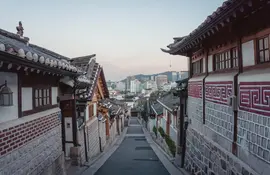
Self-guided tour of Seoul and its region. Why not take the day to explore the area surrounding the capital? - Hwaseong Fortress and its unique architecture, listed as a UNESCO World Heritage Site - Bukhansan National Park, home to some of the most beautiful hiking trails in the region, as well as several temples and a fortress - Jeonju Hanok Village and its traditional houses that will transport you back in time Optionally, take a half-day guided tour to the border between the two Koreas, to the Demilitarised Zone (DMZ) where the Korean War Armistice was signed. After dark, check out the city's nightlife in the lively districts of Gangnam, Itaewon or Hongdae.
Day 4 : Depart for Tokyo 東京

Transfer to Seoul Incheon Airport by bus (included). Flight to Tokyo.
Arrival at Tokyo airport (Narita or Haneda). Welcome to Japan! Yokoso 日本へようこそ!
Our airport assistant will welcome you at the exit of the customs and will give you all your travel documents and your Pocket WiFi. Unaccompanied transfer from the airport to Tokyo (see details).
Check-in at Hotel OMO3 Tokyo Akasaka by Hoshino Resorts or same category hotel 3* (rooms available from 3:00pm). You can pick up your pocket Wi-Fi at the hotel reception desk.
Day 5 : First steps in the capital
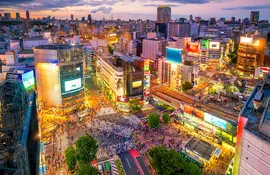
Worldwide famous Shibuya crossing, Tokyo
©Wasin Pummarin/123RF
What is there to do in Tokyo on the first day?
We advise you to slowly start visiting Tokyo from its western districts: - Harajuku : the avant-garde district - Meiji Jingû, the imperial shrine - Takeshita-Dori: the most famous street in Japan - Omotesando: Tokyo's Champs-Élysées - Shibuya and its unmistakable "crossroads"
One of our many experienced English-speaking guides can also accompany you to visit the classic sights of Tokyo (optional, from 9:00 to 17:00).
Day 6 : The big loop
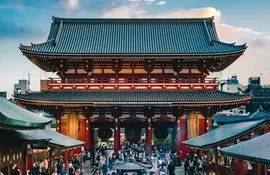
Senso-ji temple in Asakusa, Tokyo
©Moiz K. Malik/Unsplash
For this second day of visiting Tokyo, we recommend the following "loop". Start from Tokyo Central Station, with its original architecture, then go to visit: - Ginza, Tokyo's chic district - Tsukiji, the small outdoor food market - Hamarikyu, the Japanese garden between Tokyo's buildings - Asakusa, a traditional district and place of pilgrimage, accessible by a cruise on the Sumida River - Sensô-ji Buddhist temple, one of the oldest in the city - Tokyo Sky Tree reaching a height of 643m and its panoramic view of Tokyo at sunset ( ticket included in your tour )
Enjoy a cruise on the Sumida River between Hamarikyu and Asakusa.
Day 7 : Follow the guide
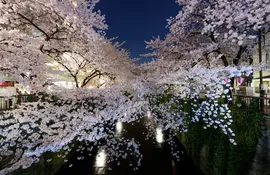
Cherry blossom "Sakura" in Meguro, Tokyo
©Jordy Meow
There are still many places to discover according to your taste! Ueno, Yanaka, Odaiba...
Don't hesitate to book an English-speaking guide for the day (optional) to visit Tokyo off the beaten path!
Make the most of our many optional activities : - Are you looking more for fun? Ghibli Museum, Disneyland or Hello Kitty Park are waiting for you! - Do you prefer a themed activity? book a visit on an architecture tour, gardens, home cooking or Noh's theatre. - Chasing thrills? Let yourself be tempted by a helicopter ride or a sumo tournament (in season)!
Day 8 : On the way to visit the emblem of Japan: Mount Fuji!
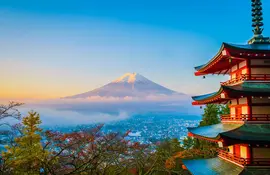
For this last day before your departure, we advise you to go to the area around Tokyo, for a day in the Mount Fuji region, in Hakone (transport optional).
You will be charmed by the magnificent scenery of this spa resort, 1 hour 30 from Tokyo (not included), Lake Ashi and its view of Mount Fuji (in good weather!). Not forgetting the volcanic site of Owakudani, accessible by cable car. If you wish to be accompanied for this day, one of our English-speaking guides will reveal all the secrets of the Mount Fuji region (optional, return trip from Tokyo).
Also: - The temples and sanctuaries of Nikko , in the heart of the forest (about 2 hours one way trip). - The town of Kamakura and its Great Bronze Buddha (about 1 hour one way, if you didn't go the day before). - The Kawaguchiko and Five Lakes region, closest to Mount Fuji. Longer and more difficult to access than Hakone.
Day 9 : Sayonara, and see you next time!
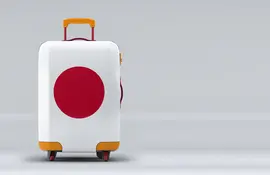
Sayonara - bye bye Japan !
©Sezer özger/123RF
Transfer to Haneda or Narita airport (included but not accompanied).
This transfer is by shuttle or shared bus, with other customers departing from the same hotel or a hotel close to yours. These transfers arrive between 3 hours and 1.5 hours before the actual departure of your flight, and stops can be made before you arrive at the airport.
If you prefer a private transfer at a time of your choice, direct to the airport and with no intermediate stops, select the "Private taxi to the airport" option.
Return flight to Europe, North America, Australia.
Do not hesitate to extend your trip by one or more days to Tokyo, or elsewhere... We will be able to advise you!

Included in your self-guided tour
Accommodation
- 3 nights in a 3* hotel in the heart of the city of Seoul
- 4 nights in a 3* hotel in the heart of the city of Tokyo
The basic rate includes a twin room for two people.
- 12-ride Seoul Metro ticket
- Flight Seoul -> Tokyo, economy class
- Transfer airport <> Seoul
- Transfer airport <> Tokyo
- Prepaid public transport card
- 3-day Tokyo Metro Pass
Experiences and meals
- Airport welcome Seoul
- Airport welcome Tokyo
- Entrance to Tokyo Sky Tree (combined ticket 350+450m)
- Breakfasts in Seoul
Additional services
- Unlimited Wi-Fi access in Seoul (public Wi-Fi everywhere), with pocket Wi-Fi in Tokyo
- Complete e- travel diary sent before your departure
- The helpline is available from 8am to 10pm Japanese time, 7 days a week, in English and Japanese. The number will be given to you in your travel pack. It is valid for telephone calls and Whatsapp.
Not included in the price of your trip
- Europe > Seoul and Tokyo > Europe Flights
- Optional insurance policies
- Personal expenses including meals (breakfast optional)
- Public transport when your transport cards have run out (see details)
- Anything not included in the "included in your tour" section
More about your trip
Your tour :
- The prices displayed on this page may vary according to the exchange rate of the Japanese ¥.
- Unfortunately, this tour is not accessible to people with reduced mobility.
- Pets are not allowed.
- This programme is subject to change due to circumstances such as weather conditions or any other case of force majeure. The order of visits may also be modified. Please note that due to the current circumstances, any information mentioned is subject to change or modification.
- Children and babies accepted. From 3 to 11 years old a child rate is offered. In each accommodation, a standard adult bed will be offered to them, and a standard seat will be allocated to them in transport. From 0 to 2 years old inclusive, a "baby" rate is offered. This price corresponds to the allocation of a cot in the majority of the accommodation of the chosen circuit. However, we cannot guarantee a baby cot in each accommodation.
- Travel diary by email 3 weeks before departure, and other electronic documents (TokyoSkyTree e-voucher)
- Korea paper documents (airport transfer tickets, transport card) when you arrive at Seoul airport by our airport assistant
- Japan paper documents (airport transfer ticket, transportation card, Japan Rail Pass voucher) and Pocket WiFi upon arrival at the Tokyo airport by our airport assistant.
- In very rare cases, mostly in very high season, steps might be reversed. You will be informed in your mini travel-guide. Thanks for your kind understanding.
Your accommodation :
- Some hotels may ask you to pay a tourist tax on arrival. This depends on the city and even the hotel, as some do not include it in the booking price. Normally, it is 200¥/night/person (about £1.37/1.93$) but can be slightly higher in 4* hotels. It must be paid in cash at the hotel reception. For traditional Japan Experience accommodations, it is included in the initial tour price.
- Room size: in Japan, a densely populated country where everything is compact, 3-star luxury hotels are of very good quality but the rooms are often quite narrow (12 to 20m2/129 sq ft to 215 sq ft) depending on the hotel. Please note the size of the single room, between 10 and 16m2 (107sq ft and 172 fq ft). For more comfort, you can choose our luxury 4* accommodation upgrade option.
- Double room: Rooms for two people in western hotels have 2 single beds (twin rooms) by default, which can usually be joined together. As an option, you can select a double room instead of a twin if you prefer a double bed.
- Single room: People travelling alone and wishing to book a single room must pay a supplement at the time of booking. The single room supplement is compulsory for orders with an odd number of participants.
- 3-person room: If there are 3, 5 or more of you and you do not select the single supplement, a triple room will be allocated to you.
- In the case of a group order (> 5 people), it is possible, depending on hotel availability, that not all members of the group will be accommodated in the same hotel. Nevertheless, we aim to keep you close.
- Names of the hotels : The names given on the site are for information only. In the event of unavailability, an establishment of equivalent standing will be scheduled. Hotels, corresponding to local standards, are given as an indication and may be changed on site for hotels of a similar category.
Your transport :
- Europe -> Seoul et Tokyo -> Europe flights are not included in this tour. Do not hesitate to contact us if you would like to include flights in your order: Flights in economy class with stopovers or direct flights, eco-premium or business air upgrades, provincial departures or abroad: we will be able to advise you.
- The departure and end dates of the tour presented on this page relate to your stay in Asia. You will arrive in Korea via Seoul Incheon Airport (ICN) via Tokyo and depart from Tokyo (Narita NRT or Haneda HND). You will have to leave Europe the day before and land at 6:30pm at the latest to make the most of the airport services of your tour (welcome and transfer to Seoul). The return flight from Tokyo is on the same day due to the time difference, with a departure time of 9am at the earliest. Please do not hesitate to consult us for any uncertainty or need for precision in the choice of international flights.
- If the flights have been purchased by your care without the intervention of Japan Experience, it is necessary to send us by mail 1 month before your departure your flight information (flight number, airport, date and time of arrival) to allow us 'Organize your welcome and airport transfer.
- Airport transfers in Seoul and Tokyo: The shared shuttle bus leaves from the airport and stops either in front of your hotel or at a stop located between 1 and 15 min walk from your hotel. Our airport assistant will drive you to the platform to take the airport transfer. Then this transfer to the hotel is done without assistance.
- For Japan : included in your tour is a pre-paid transport card with 1500¥ loaded in advance (about £10.30 / 14.54$) (Suica or Pasmo brand); and a 3 day metro pass. These 2 cards should cover a large amount of your journeys in Tokyo. Please note: The metro pass is valid for 72 hours after the first use, until the expiry date printed on the back of the pass on this first use. This pass allows you to use all 13 of Tokyo's underground lines (Tokyo Metro and Toei Subway). The JR regional train lines are only accessible with the pre-payment card, where the journey is charged to you. When the 3-day metro pass and the 1,500¥ pre-paid transport card expire, you will have to pay for all your journeys by reloading your pre-paid transport card (in the ticket machines at all stations and metro stations. A metro ticket in Tokyo costs around £1.71 / 2.42$, depending on the length of the journey).
- For Korea, the tour includes a Seoul public transport pass with 12 intra-city trips (given to you upon arrival in Seoul). Beyond that, all travel is at your expense.
Your trips :
- Airport reception is in English (in Seoul and Tokyo). Your airport assistant will be waiting for you at the customs exit holding a sign with the name of the reservation. They will give you your travel documents and take you to your airport transfer. They will not accompany you to Tokyo (this is possible, but optional).
Your meals :
- Except for breakfasts in Seoul, no meals are included in your package. Breakfasts which are not included in your package can be added at the reception when you arrive at the hotel. However, you will find many cafés near your hotel serving copious breakfasts, often tastier than those in the hotels, which sometimes have tight schedules and are predominantly savoury. However, if you would like to add breakfast to your offer when you make your reservation, you can select it as an option
Your additional services:
- A pocket wifi is included in your tour. It allows unlimited high-speed internet access. Your Pocket WiFi will be given to you at the airport of arrival.
- It comes with a small booklet to operate your device (don't panic: simple operation) and a prepaid envelope to return your device at the end of your stay. Your pocket wifi will work naturally until the last day of your trip to Japan.
- A maximum of 5 devices can be connected to a pocket wifi (phone, tablet, computer).
- A single pocket wifi is provided for a circuit order of 1 to 5 people. For an order of 6 people or more, a second pocket wifi will be added automatically and at no extra cost to your reservation.
When you buy, Japan Experience offers you 2 types of protection:
Japan Experience Flex : Cancellation insurance before departure under conditions.
Japan Experience Protect : Pre-departure cancellation insurance under conditions and on-site assistance under conditions.
Frequently asked questions
Do I need a visa? Do I need vaccinations?
As of October 11, 2022, Japan will open its borders to all Europeans (including the European Union, the United Kingdom and Switzerland) and North Americans (Canada and the United States) without requiring a visa.
Only non-triply vaccinated travelers need a negative PCR test performed within 72 hours prior to departure.
Do I still need a visa to travel to Japan as a tourist?
No, no visa is required for blue countries including all European countries (European Union, United Kingdom and Switzerland included) and North American countries (Canada and United States). List of blue countries: https://www.mofa.go.jp/j_info/visit/visa/short/novisa.html . If you have another nationality, please contact the Japanese embassy in your country of residence to obtain this visa.
Do I still need a PCR or antigen test to go to Japan?
No, if you are triple vaccinated with the vaccines approved by Japan (Pfizer, Moderna, ...exhaustive list here : https://www.mofa.go.jp/ca/fna/page24e_000317.html ) there is no need for any test.
I do not have 3 doses of vaccine or I am not vaccinated against COVID, can I enter Japan?
Proof of Covid vaccines is no longer required for travelers from "blue" countries. Therefore, unvaccinated travelers can enter Japan if they live in blue countries. But a negative PCR test is required at embarkation for travelers who are not vaccinated 3 times.
Is there still a quarantine upon arrival in Japan?
Quarantine and testing on arrival have been eliminated for travelers from blue countries.
Is insurance mandatory?
No, but it is recommended. Japan Experience, as an option of its tours, provides appropriate travel insurance solutions.
What anti-covid measures are still in place in Japan?
The mask must be worn indoors (except in exceptional cases) and in transportation.
What applications should I download before entering Japan?
For tracking the evolution of the coronavirus epidemic, the Japanese government recommends downloading several applications:
MySOS, the health and location tracking app (it will be used to confirm your location, health status and accommodation).
COCOA, the COVID-19 contact confirmation app (this will be used to notify you of possible contact with a COVID-19 positive person).
For more information, please visit: https://www.hco.mhlw.go.jp/manual/pdf-en/summary.pdf
Is it safe to travel in Japan? What about solo travellers and children?
Japan is one of the safest countries in the world, ranked in the top 10 by the Global Peace Index. Therefore travelling alone is safe. Women and girls can travel alone without fear of being harassed or solicited in public places. The same goes for children, who can be seen going to school alone in the metro from the age of 7. This can give you an idea of the country's level of safety. Last but not least, Japan is a haven for children: the safety, the amusement parks, the friendly attitude of the population.
How do I book a tour?
It's very simple and easy, just book directly online through our website: (1) Choose the tour of your choice, your departure date and indicate the number of participants. Several options are available to you. (2) Pay a deposit of 35% of the total amount* online and confirm your reservation. (3) You will then receive an e-mail confirming the conditions of your registration. (4) Book your flight ticket, either with Japan Experience or by yourself (taking into account the necessary schedules for your tour) (5) One month before departure, settle the balance of your booking. For more information on the tours or to make a reservation, please contact our advisors on +33 (0)1 42 61 60 83 or at [email protected] , or come and visit us at our agency in Paris. * travel insurance and options included
Which payment methods are accepted?
You can pay online by credit card. In our agency, you can pay by credit card, cash (under €1.500) or cheque with proof of identity (France only).
Do Japanese people speak English?
Few Japanese speak English, even in the tourism sector. With the exception of hotel staff in the major tourist cities, few Japanese are fluent in English. However, this does not prevent them from doing everything to help tourists in need. One or more guided activities are included in all Japan Experience tours. This will allow you to get a closer look at Japan's thousand-year-old culture. Feel free to add one or more optional guided days. Guided tours are led by bilingual Japanese guides, for total immersion without effort!
Our commitments as Japan Experience, Europe No. 1 travel in Japan
- The guarantee of the first tour operator specialised exclusively in Japan for 40 years
- A wide range of products to let you Experience Japan from the inside
- Competitive prices thanks to a single team in UK, Europe, USA and Japan, with no intermediaries
- Assistance available in Japan throughout your trip
- A specialised team is available 7 days a week by phone or email
- The best advice thanks to the 3,500 articles available on our website
Optional services
Our other self-guided tours.
Discover other Self-Guided tours like « Seoul & Tokyo »
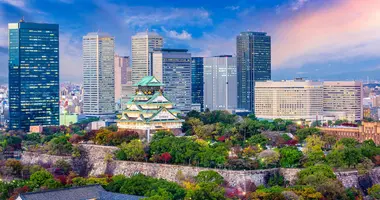
City break - Osaka tour Self-Guided Tours in Japan
- Duration : 8 days
- Locations : Osaka
- Included : Airport Transfers, 3* Hotels, Non-flight transportation, Guided activity, Travel diary, Pocket wifi, Assistance
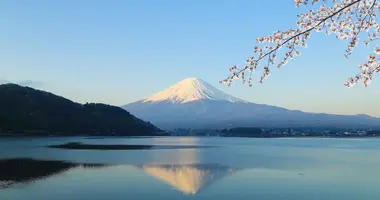
Tokyo, Mount Fuji & Kyoto Self-Guided Tours in Japan
- Duration : 10 days
- Locations : Tokyo, Hakone Mt Fuji, Kyoto
- Included : Airport Transfers, 3* Hotels & Ryokan, Non-flight transportation, Guided activity, Travel diary, Pocket wifi, Assistance
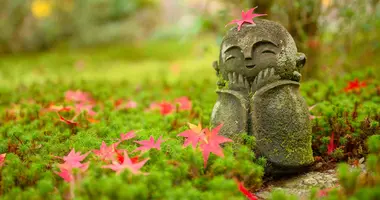
Japanese Immersion Self-Guided Tours in Japan
- Duration : 13 days
- Locations : Tokyo, Hakone Mt Fuji, Hiroshima, Osaka, Koyasan, Kyoto
- Included : Airport Transfers, 3* Hotels & Ryokan, Non-flight transportation, Guided activities, Travel diary, Pocket wifi, Assistance
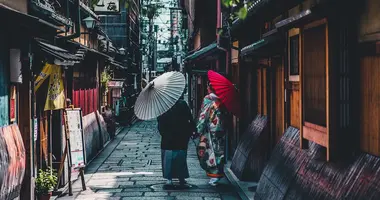
Romantic tour in Japan Self-Guided Tours in Japan
- Locations : Tokyo, Hakone Mt Fuji, Okayama, Miyajima, Kyoto
- Included : Airport Transfers, 3* Hotels & Ryokan, Japan Experience house, Non-flight transportation, Guided activities, Travel diary, Pocket wifi, Assistance
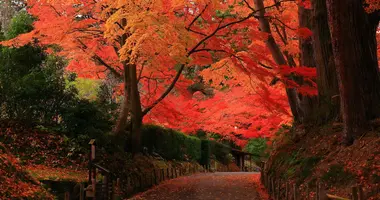
Tohoku: Traditional Japan Self-Guided Tours in Japan
- Duration : 18 days
- Locations : Kyoto, Tokyo, Nikko, Sendai, Tohoku, Aomori
- Included : Airport Transfers, 3* Hotels & Ryokan, Japan Experience house, Non-flight transportation, Guided activity, Travel diary, Pocket wifi, Assistance
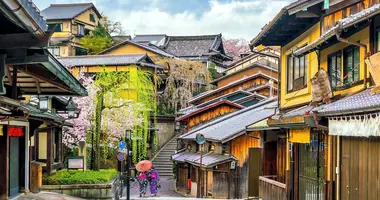
Slow Travel Japan Self-Guided Tours in Japan
- Duration : 21 days
- Locations : Tokyo, Hakone, Kyoto, Osaka, Hiroshima, Okayama
- Included : 3* Hotels & Ryokan, Airport Transfers, Non-flight transportation, Travel diary, Pocket wifi, Assistance, Activities
Our activities in Seoul, Tokyo, Hakone
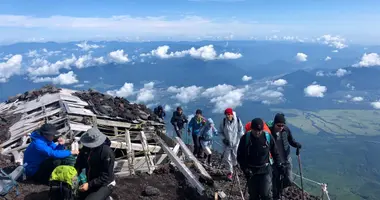
Climbing Mount Fuji Fujiyoshida
- Duration : 2 day
- Location : Tokyo
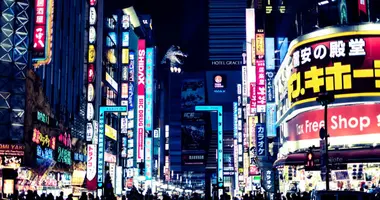
Tokyo Discovery, two days Activities in Tokyo
- Duration : 16 hour
- Location : Chiyoda City
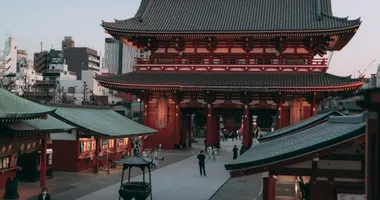
Tokyo Discovery, Half Day Activities in Tokyo
- Duration : 4 hour
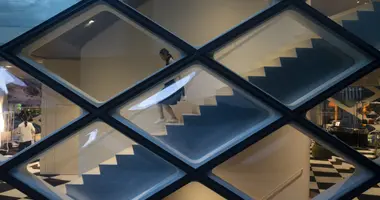
Tokyo Architectour Activities in Tokyo
- Duration : 8 hour
- Location : Minato City

Night cruise through the industrial zone Activities in Japan
- Duration : 1 hour

Kabuki, the Japanese popular theatre Activities in Tokyo
- Duration : 3 hour
Please select your country on the list below:
- Switzerland
- United Kingdom
- Other countries

IMAGES
VIDEO
COMMENTS
A: The best Self-guided Tours in South Korea according to Viator travelers are: Seoul Morning E-bike Tour. Seoul Pub Crawl by Absolute. South Korea Data eSIM : 0.5GB per Day to 30GB up to 30Days. Korea SIM Card with Unlimited Local Data & Optional Calls. Private Layover Tour from Incheon Airport to Seoul.
Custom Walk: Create Your Own Walking Tour. Sightseeing Walk: Seoul Introduction Walking Tour. Sightseeing Walk: Insa-dong Walking Tour. Sightseeing Walk: Bukchon Hanok Village Walk. Discovery Walk: Myeong-dong Shopping Walk. Article (B): Namsan: Park, Tower and Village.
Jarrod and Emma Hall, Hidden Lanes creators spent 9 years living in South Korea, and during that time created video content and a slow travel guide to Korea's Jeju Island. The journey was a walking or cycling route that included beautiful scenery, funky cafes, art galleries and nature.
Tours and Tickets by South Korea Self-Guided Tours. Seoul Self-Guided Audio Tour. 7. Historical Tours. 1-2 hours. Learn more about the top 16 tourist attractions in Seoul. Its history, culture, myths, architecture, and other important…. from. $9.
Seoul Self Guided Sherlock Holmes Murder Mystery Game. Explore the city at your own pace while playing the Sherlock Holmes City Game, a self-guided tour that offers a lot of freedom…. 6. Seoul, South Korea Scavenger Hunt: Seoul of South Korea. Let's Roam is the #1 app-led scavenger hunt company.
Welcome to South Korea! Your adventure begins in Seoul, where you'll quickly get a feel for the city's vibrant atmosphere during a self-guided tour of Insadong Street and the quirky Alive Illusion Museum.Wake early the next morning for a full-day guided tour, complete with a visit to Gyeongbokgung palace and a stroll through Bukchon Hanok Village. ...
3. Seoul Self Guided Sherlock Holmes Murder Mystery Game. Explore the city at your own pace while playing the Sherlock Holmes City Game, a self-guided tour that offers a lot of freedom…. 4. Seoul, South Korea Scavenger Hunt: Seoul of South Korea.
Seoul Introduction Walking Tour (Self Guided), Seoul. The capital of South Korea, Seoul, is a bustling metropolis. Located along the banks of the Han River, the city boasts more than 2,000 years of history. Back in the ancient times, three kingdoms - Baekje, Goguryeo, and Silla - fought over the possession of this strategic location.
The best Self-guided Tours in Seoul according to Viator travelers are: Seoul city Private Full-Day Tour (Lunch is included) Ski Tour to Jisan Ski Resort or Yangji Ski Resort from Seoul. Seoul, South Korea Scavenger Hunt: Seoul of South Korea. Korea Unlimited Data SIM Card Pick up at Korea Airports.
High Speed 4G LTE Data Network provided by KT, one of the most reliable carriers in Korea. Share to 2-3 devices at the same time and stay connected during your journey Stable, nat
Grand Tour of SOUTH KOREA - A Guide for Individual First-Time Visitors. Posted on 2023-12-16 2024-01-19 Author Renata Green Leave a ... A Self-Guided Island Tour; One Day in SOLLER, DEIA, and VALLDEMOSSA - Famous Places for Famous People; GYEONGJU: Two Days in the City Where Korea's Imperial History Comes Alive; CURACAO - The Caribbean ...
What people love about Fully Guided Tours in South Korea. Consolacion Cochran 30 Mar, 2024. 5. Our tour guide Tommy Lee was awesome—highly recommended!! Best of South Korea. Susan Tanga 17 Mar, 2024. 5. Was excellent tour guide was the best. 12-Day South Korea Adventure: From Seoul to Jeju Island.
S$196.18. per adult. Mini Van Private Guided Tour in Seoul (Optional Layover) 41. Full-day Tours. from. S$303.25. per adult (price varies by group size) Learn and Make Your Very Own Craft Makgeolli.
Discovering Korea - 10-day Self-Guided Tour. Perfect for Explorer & Independent traveler, enjoy a 9N10D driving trip around Korea. This package includes a rental car (with English speaking navigation), airport transfer by minivan with private driver, nine nights accommodation in 3/4-star hotels, one way KTX from Busan to Seoul.
Fully Guided 6 Day Hiking Tour. The Jeju Olle is a set of 26 hiking trails on Jeju Island, off the south coast of South Korea. The trails total over 400km on this extinct volcano. Each trail is between 12 and 20km in length. There are a few hills (extinct volcanic vents, actually!) but none are steep or higher than 200M.
Tour. Tour length: 9 days. Total tour distance: 239 miles. Daily tour distance: 40 miles. Difficulty: 30 / 100. Description. Explore Korea! (8 nights/9 days) is our first self guided bicycle program. Your adventure will start in the capital of the country: Seoul! You will first ride in the urban, modern and busy city.
From a cycling perspective, South Korea is one of the world's most diverse locations for bike touring. From it's sprawling capital of Seoul, to the outer regions of the country, which is largely mountainous. South Korea's national parks provide nature, and a unique look at the country. South Korea also boasts a relatively new set of multi ...
Tours and Tickets by South Korea Self-Guided Tours. Seoul Self-Guided Audio Tour. 7. Historical Tours. 1-2 hours. Learn more about the top 16 tourist attractions in Seoul. Its history, culture, myths, architecture, and other important…. from. C$12.
Baekdu Daegan. This 460 mile trail actually crosses North and South Korea. When walking in South Korea, the Baekdu Daegan trail takes you along this beautiful section of the mountain range and with 70 % of the country being covered in mountains it is great to walk them to gain a real sense of what the country is all about.
With the help of the easy-to-use interface of the app you can create self-guided walks to explore Busan single-handedly. Each such walk comes with a detailed route map and GPS navigation to guide you from one tour stop to next. The app works offline, so no data plan is needed when traveling abroad.
Touring of Seoul, Andong and Gyeongju in South Korea. Guided sightseeing and walking tours in Tokyo, Kamakura, Lake Kawaguchi and Kyoto in Japan. Baggage forwarding service from Tokyo to Kyoto (one bag per person) 9 breakfasts and 1 Japanese dinner at Lake Kawaguchi. Airport arrival and departure transfer on days 1 and 7 in South Korea.
per adult (price varies by group size) Seoul Full Day Tour with a Local: 100% Personalized & Private. 4. Historical Tours. from. $203.45. per adult (price varies by group size) LIKELY TO SELL OUT*. Highlights & Hidden Gems With Locals: Best of Seoul Private Walking Tour.
A tour of South Korea and Japan : visit Seoul and Tokyo on this self-guided tour. In the heart of Asia, these two modern capitals also have a traditional side to discover. Accommodation, internal transport and travel between South Korea and Japan are included. Set off on this trip to Asia with peace of mind!